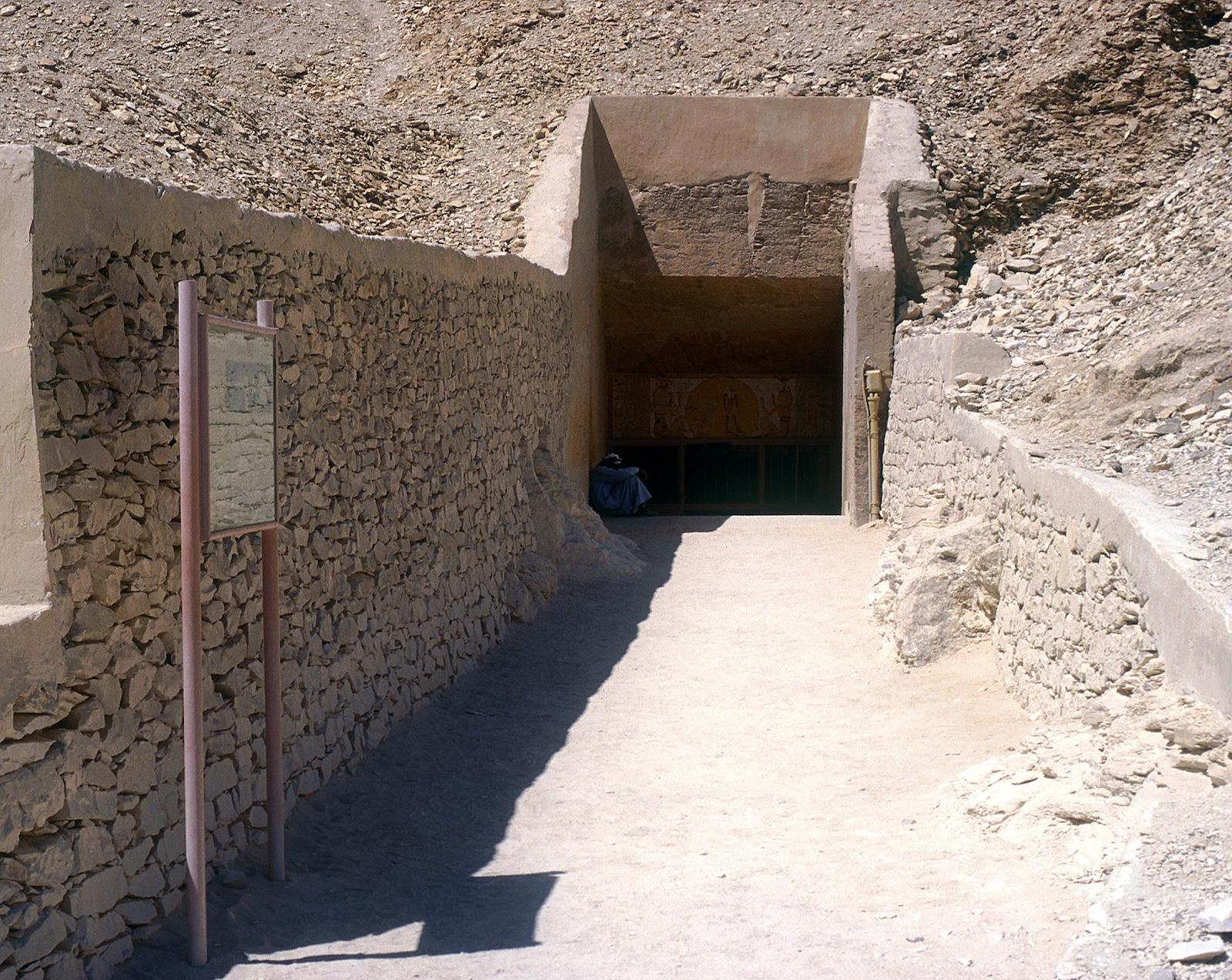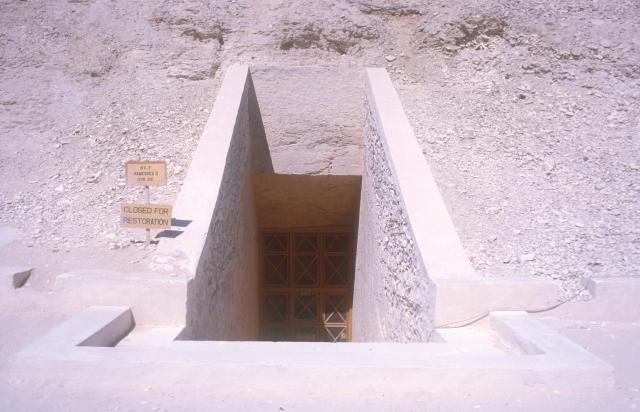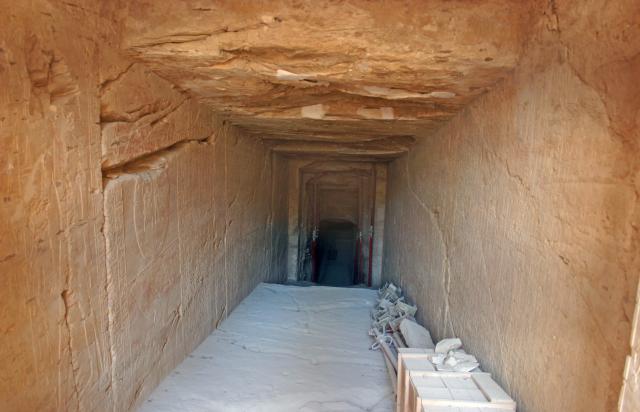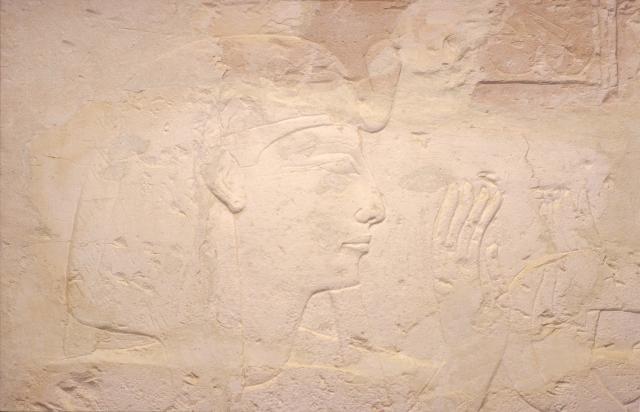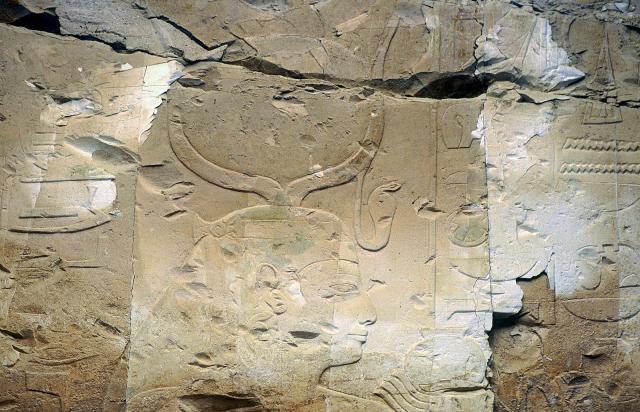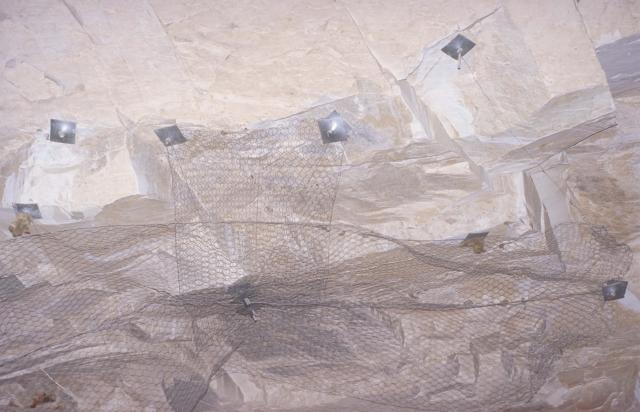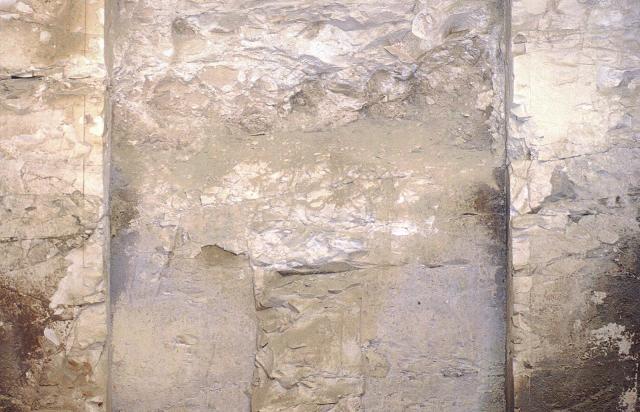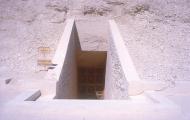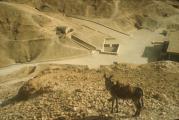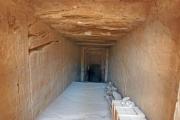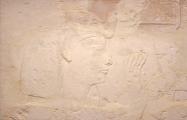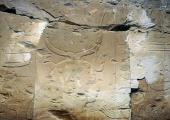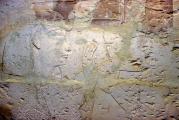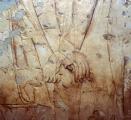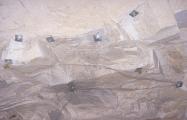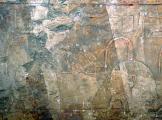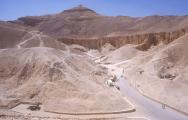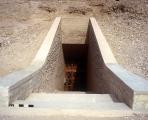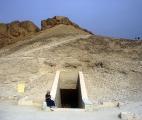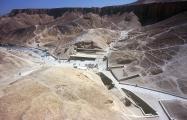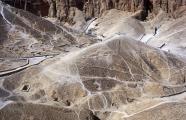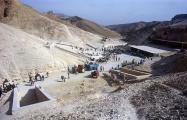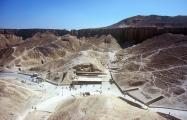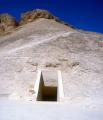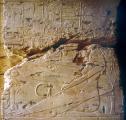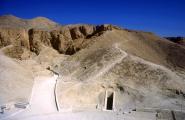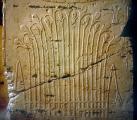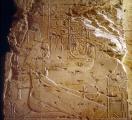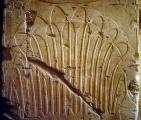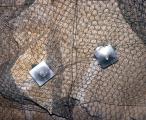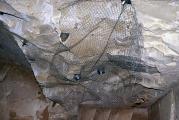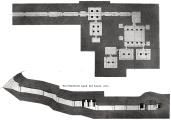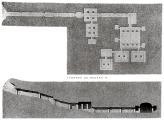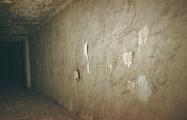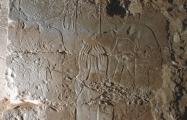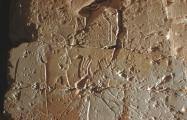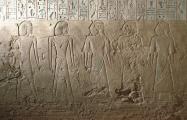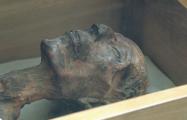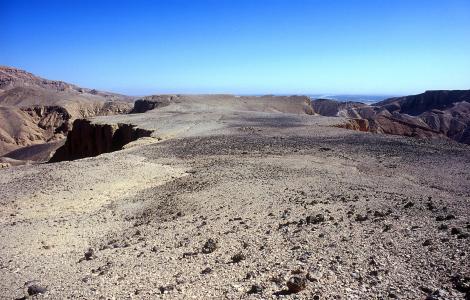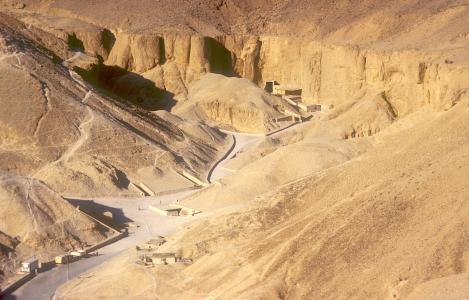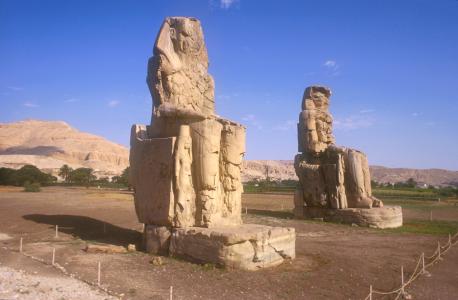KV 07
Rameses II
Entryway A
See entire tombA divided stairway descends from a hillside cutting near the valley floor to gate B. The top steps are modern additions; the divided stairway is ancient. The latter recently has been covered with limestone blocks cut to replicate the appearance of the ancient descent. A pair of beam holes for lowering a sarcophagus are located at the lower end in front of gate B.
Gate B
See entire tombThere are steps in this gate. A modern wooden door has been installed. Door pivot holes on either side of the soffit and a recess in the beginning of the ceiling of corridor B show that large wooden double doors were to close the gateway. The lintel is decorated for the first time with the solar disk flanked by Nephthys and Isis. The interior of the soffit is cut with beam slots where a wooden lintel was once placed. The reveals contain representations of Ma'at kneeling above the heraldic plants of Lower and Upper Egypt, while jambs contains the names and epithets of the King. The raised relief decoration in this gate has been damaged due to flooding.
Porter and Moss designation:
Corridor B
See entire tombThe lower third of the floor of this sloping corridor has an increased angle of descent and changes to a divided stairway, although the slope of the ceiling does not change. At this point, a pair of beam holes are cut into the sides of the corridor. The left (southwest) wall is decorated with three scenes: Rameses II before Ra-Horakhty; the Solar Disk containing scarab and ram-headed man between a serpent and a crocodile; and the beginning of the Litany of Ra. The right (northeast) wall includes more text of the Litany of Ra. The raised relief decoration carved in the stone in this corridor has been badly damaged due to flooding.
Porter and Moss designation:
Gate C
See entire tombThe thicknesses contain texts from the Litany of Ra. The raised relief decoration has been badly damaged due to flooding. The divided stairway that started in corridor B continues through this gate.
Porter and Moss designation:
Stairwell C
See entire tombThe entire floor of this corridor consists of a gently sloping divided stairway. Two trapezoidal niches lie opposite each other in the central portion of the walls. The right (northeast) and left (southwest) walls display spell 151 of the Book of the Dead. The painted plaster decoration in this corridor has been badly damaged due to flooding.
Porter and Moss designation:
Gate D
See entire tombThe reveals are decorated with the four sons of Horus. The painted plaster decoration in this gate has been badly damaged due to flooding.
Porter and Moss designation:
Corridor D
See entire tombA portion of the floor of this corridor is moderately sloped, ending in two steps which descend to a flat floor. The floor was levelled in this region to allow the door or doors covering gate E to open outwards toward the entrance to the tomb. This is an unusual feature: most tomb doors open inward. The right (northeast) and left (southwest) walls of this corridor contain the fourth and fifth hours of the Imydwat respectively. The painted plaster decoration in this corridor has been badly damaged due to flooding.
Porter and Moss designation:
Gate E
See entire tombThe left (southwest) side of this gate contains a lintel beam slot which once held either a large single wooden door or smaller double doors.
Porter and Moss designation:
Well chamber E
See entire tombThe well shaft has been cut through the floor of the chamber but is still partly filled with debris. The wall scenes show Rameses II before deities, and on the walls below the floor level at the top of the shaft there are scenes from the Imydwat. The painted plaster decoration in this corridor has been badly damaged due to flooding.
Porter and Moss designation:
Gate F
See entire tombA door pivot hole in the right (northeast) side of the gate shows that a large wooden door was to close this gate.
Porter and Moss designation:
Pillared chamber F
See entire tombTwo pairs of pillars flank the central descent with its divided stairway. Most of the chamber on either side of the descent is still filled with debris, obscuring the wall decoration. The right (northeast) wall has a gate in the center which leads to a pillared side chamber (Fa) and a smaller side chamber (Faa) beyond.
Porter and Moss designation:
Descent F
See entire tombThe descent from chamber F to gate G is a divided stairway.
Porter and Moss designation:
Gate Fa
See entire tombThis gate is only partly visible at the top, as the area before and after it are unexcavated.
Porter and Moss designation:
Side chamber Fa
See entire tombThis unexcavated chamber contains unidentified, badly destroyed decoration. Four pillars stand in the center of the chamber.
Porter and Moss designation:
Gate Faa
See entire tombThe gate to this side chamber is located in the rear (northeast) wall of side chamber Fa. It is unexcavated, but contains a compound jamb.
Porter and Moss designation:
Side chamber Faa
See entire tombThe chamber is filled with flood debris to within 50 cm (20 inches) of the ceiling. There is no evidence of pillars. The wall decoration in this unexcavated chamber is badly destroyed.
Porter and Moss designation:
Gate G
See entire tombThe gate leads into corridor G.
Porter and Moss designation:
Corridor G
See entire tombThe left (southwest) wall shows the beginning of the Opening of the Mouth ritual, with Rameses II before an altar and two Iwnmutef priests; on the right (northeast) wall are additional material from the Opening of the Mouth ritual. The painted plaster decoration in this corridor has been badly damaged due to flooding.
Porter and Moss designation:
Gate H
See entire tombDoor pivot holes in the right (northeast) side of this gate show that it was to be closed by a large wooden door.
Porter and Moss designation:
Corridor H
See entire tombThe left (southwest) wall of this corridor is decorated with texts from the Opening of the Mouth ritual, and the right (northeast) wall contains offering lists from it. The painted plaster decoration in this corridor has been badly damaged due to flooding.
Porter and Moss designation:
Chamber I
See entire tombIn this chamber, the tomb axis turns so that its axis is perpendicular to the original. The rear (northwest) wall contains the remains Spell 125 from the Book of the dead, while Rameses II appears with several deities on the front (southeast) wall. The painted plaster decoration in this chamber has been badly damaged due to flooding.
Porter and Moss designation:
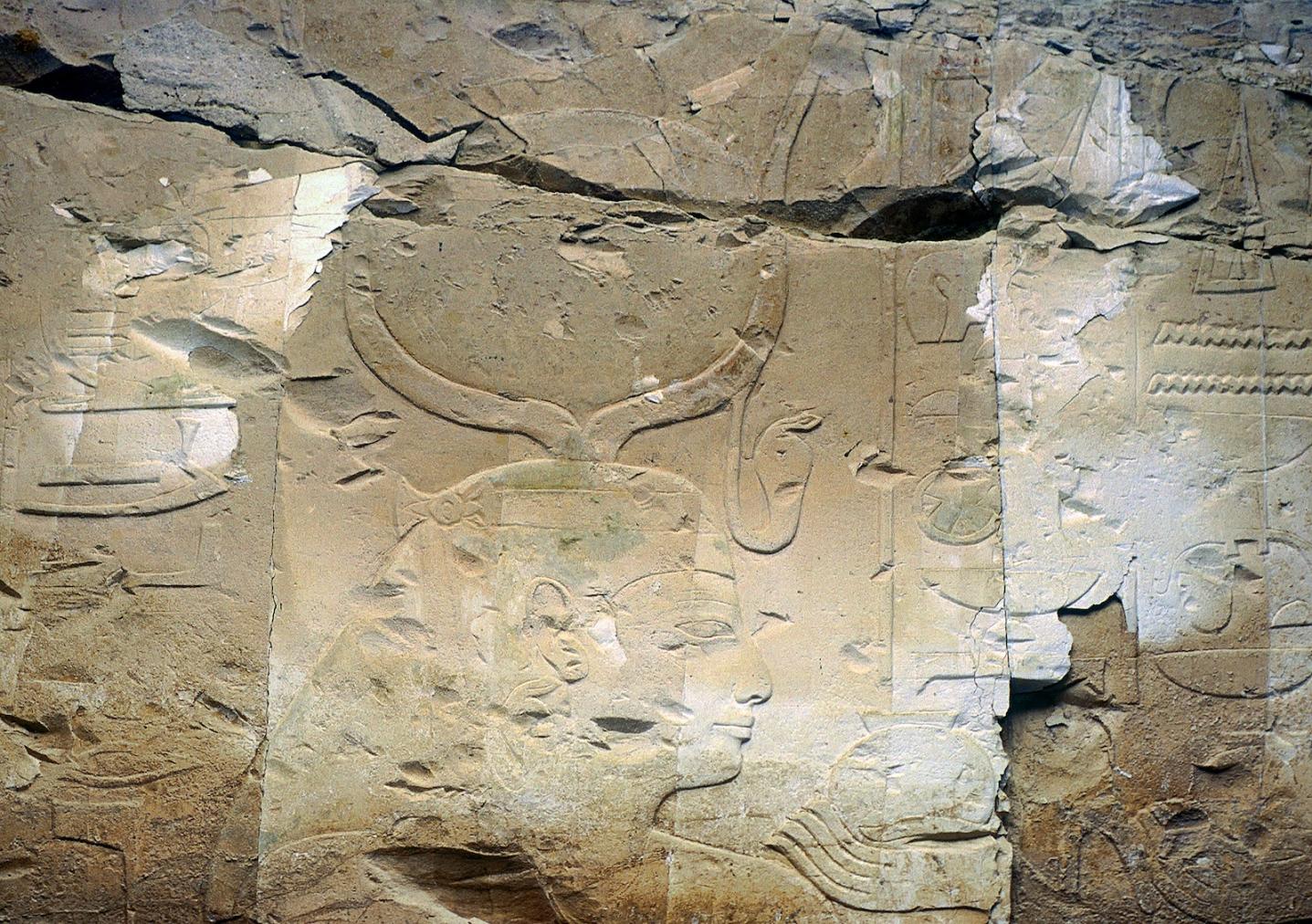
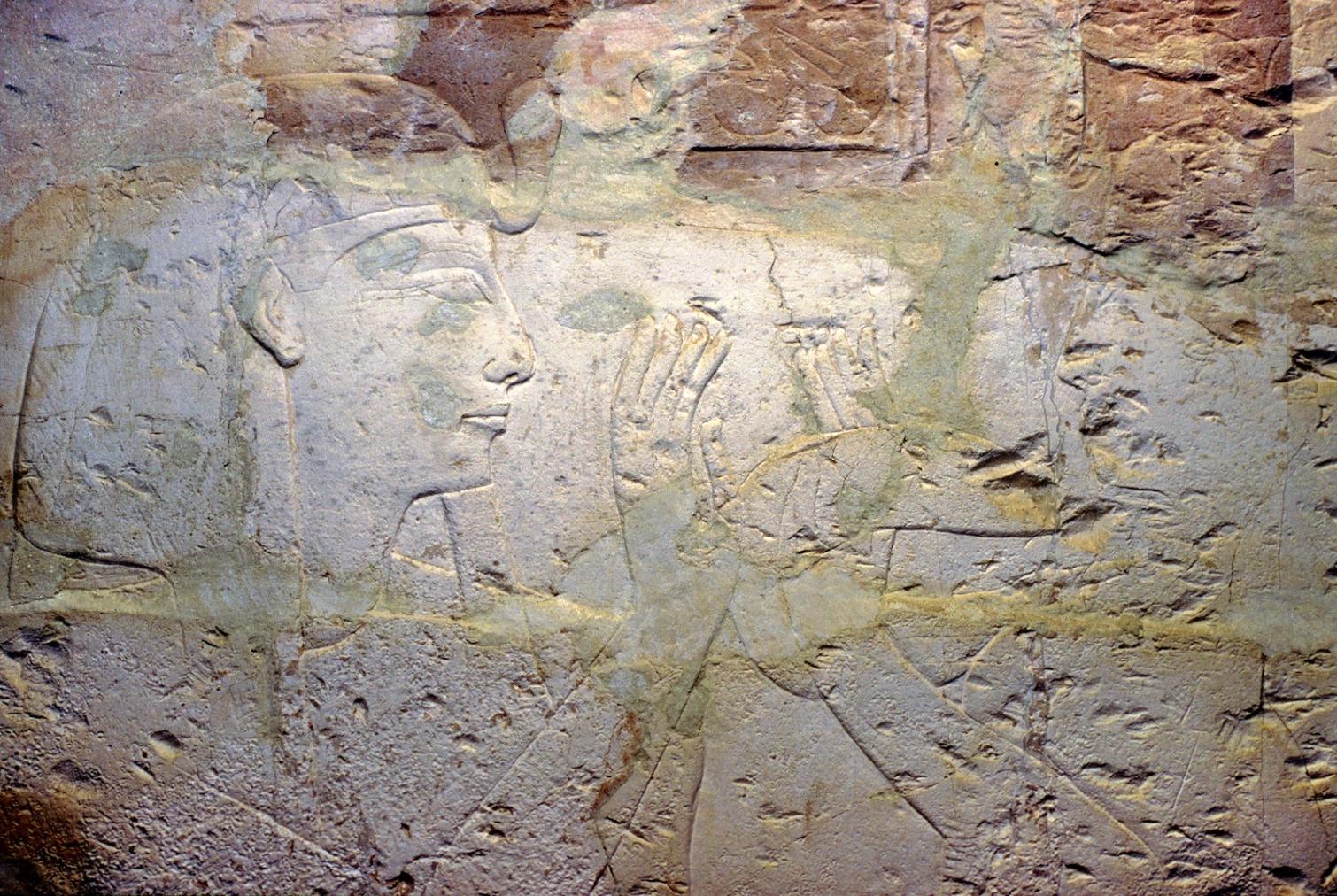
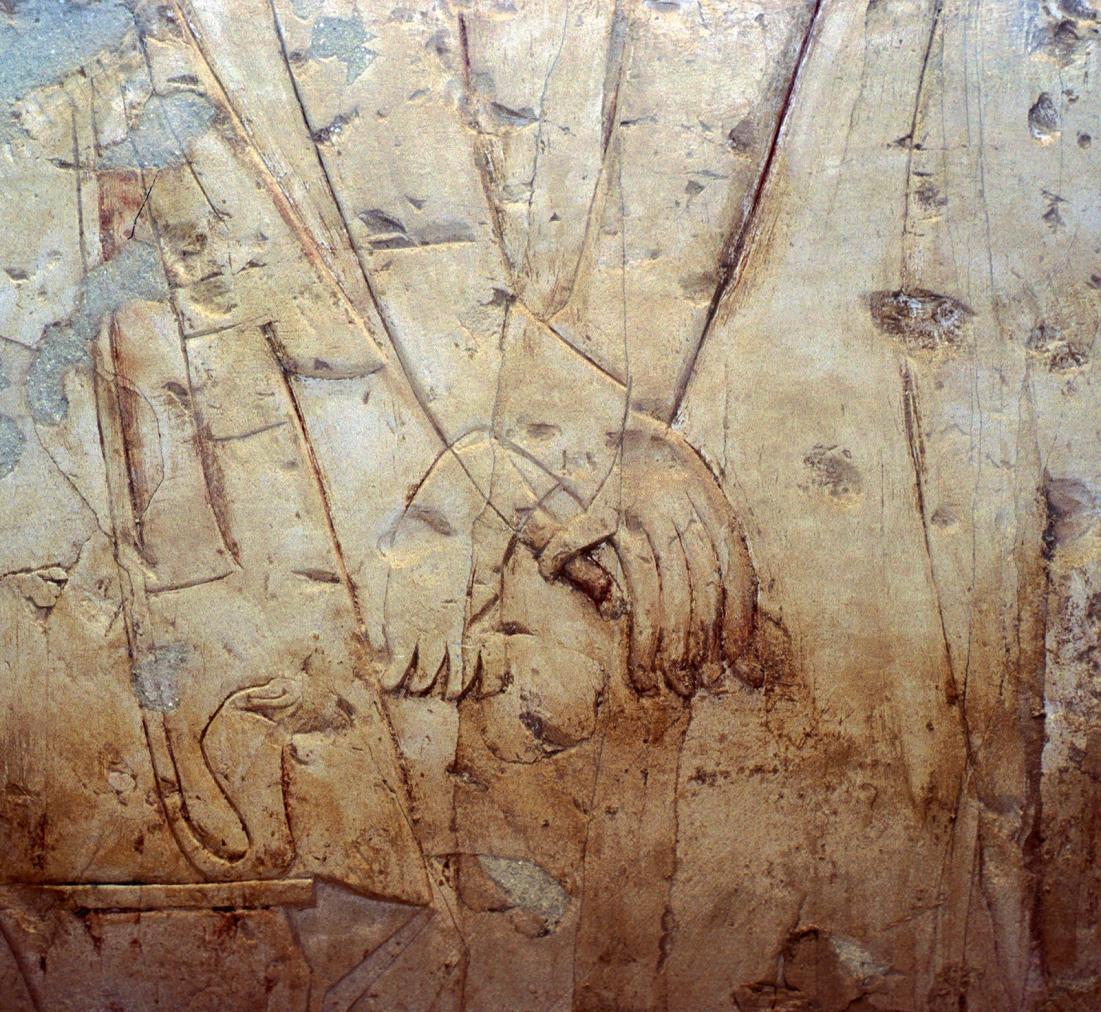
Gate I
See entire tombThis gate has a compound jamb. Door pivot holes in the right (northeast) side of the gate show that it was to be closed by a large wooden door.
Porter and Moss designation:
Gate J
See entire tombThis gate contains one irregularly cut step which leads through its compound jamb. Door pivot holes in the right (southeast) side of the gate show that it was to be closed by a large wooden door.
Porter and Moss designation:
Burial chamber J
See entire tombThe axis of the burial chamber is perpendicular to the axis of corridor H. Four pillars lie on either side of the sunken floor and the vaulted ceiling.
The front (southwest) wall displays the first and second divisions (P)/second and third hours (H) of the Book of Gates, while the rear (northeast) wall contains the remains of the first and second hours of the Imydwat and representations of funerary objects. The left (northwest) wall is decorated with the first division (P)/second hour (H) of the Book of Gates. The right (southeast) wall is decorated with the fifth hour of the Imydwat and the second division (P)/ third hour (H) of the Book of Gates. The painted plaster decoration has been badly damaged due to flooding. Traces of decoration on some pillar faces indicate that the sides facing the sunken centre of the chamber were decorated with djed pillar designs. The other faces were decorated with representations of Rameses II and deities.
Chamber plan:
RectangularRelationship to main tomb axis:
PerpendicularChamber layout:
Pillared front and rear upper level, sunken central lower levelFloor:
Two levelsCeiling:
Vaulted
Porter and Moss designation:
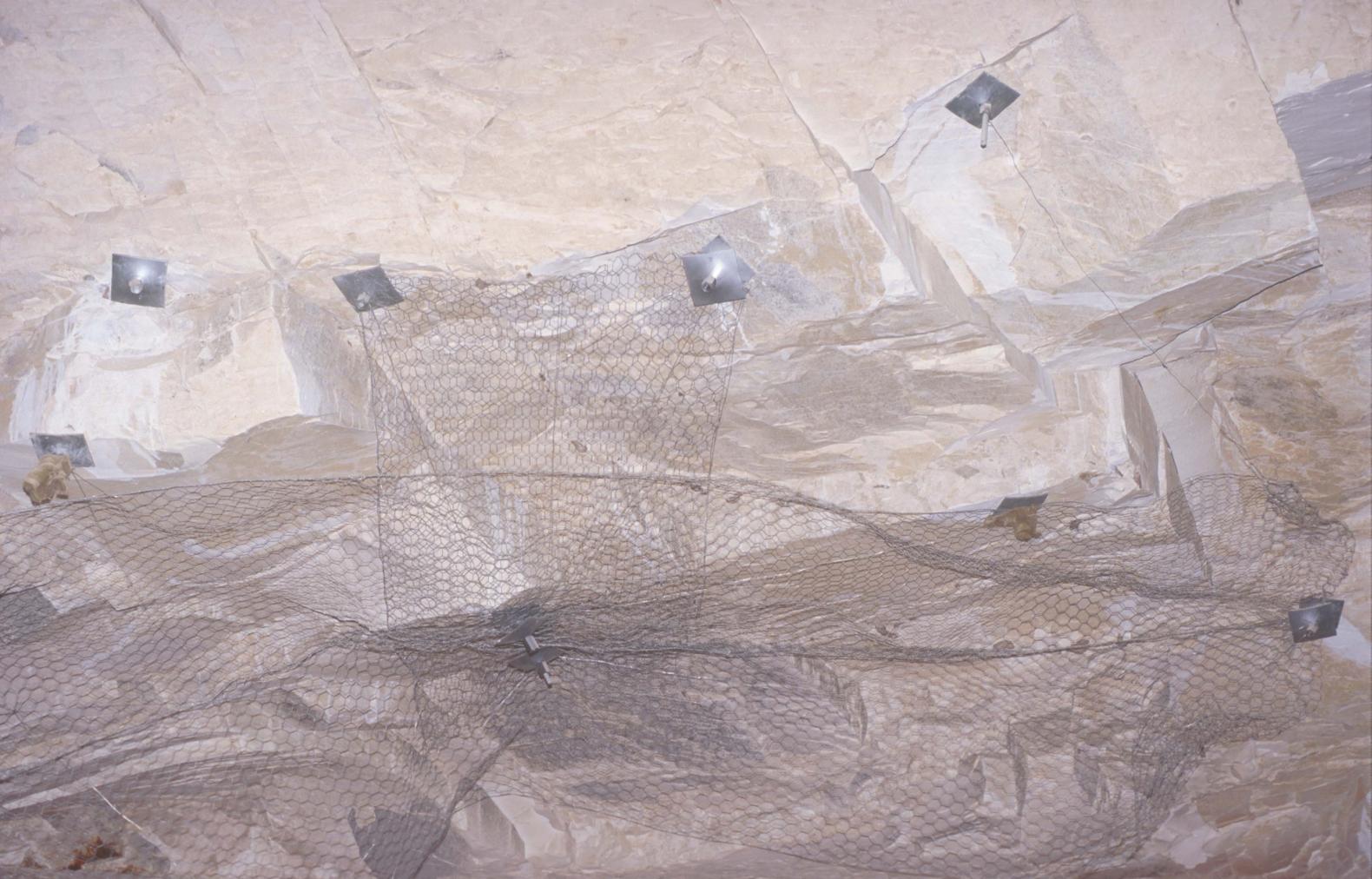
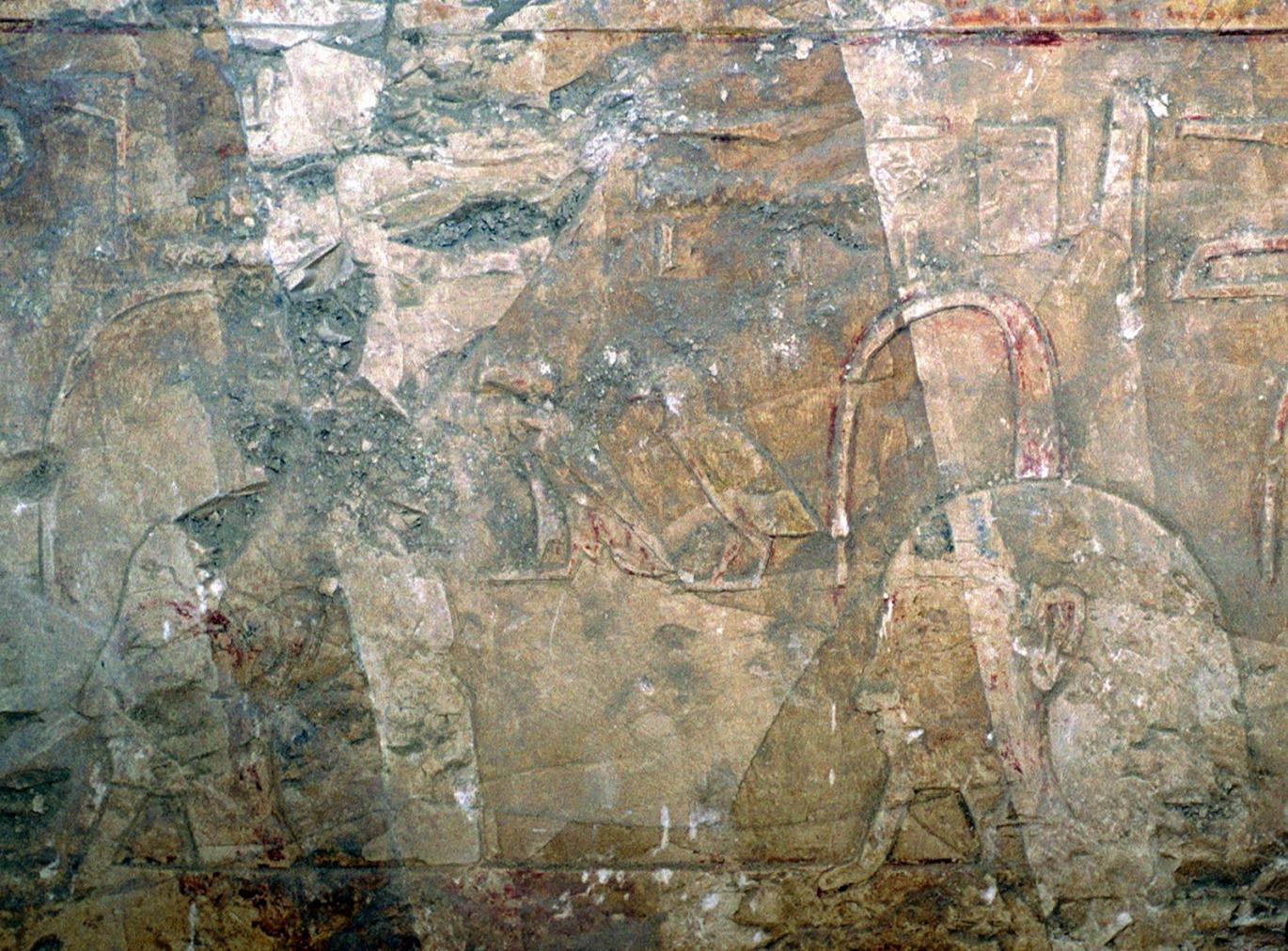
Gate Ja
See entire tombThe compound jamb and right (northeast) side door pivot holes show that a large wooden door once closed this gateway. Most of the decoration is lost.
Porter and Moss designation:
Side chamber Ja
See entire tombThis side chamber lies to the left (northwest) of burial chamber J and is designated K by Leblanc. The walls of the chamber are decorated with the third division (P)/fourth hour (H) of the Book of Gates, beginning at the left of the entrance and ending at the right. The painted plaster decoration in this chamber has been badly damaged due to flooding.
Porter and Moss designation:
Gate Jb
See entire tombThe compound jamb and right (northeast) side door pivot holes show that a large wooden door once closed this gateway. The decoration is badly damaged.
Porter and Moss designation:
Side chamber Jb
See entire tombThis side chamber lies left (northwest) of burial chamber J and is designated L by Leblanc. The walls contain the twelfth hour of the Imydwat. The painted plaster decoration in this chamber has been badly damaged due to flooding.
Porter and Moss designation:
Gate Jc
See entire tombThe gate is located in the left part of the rear (northeast) wall of burial chamber J. The compound jamb and right (southeast) side door pivot holes show that a large wooden door once closed this gateway. The decoration is badly damaged.
Porter and Moss designation:
Side chamber Jc
See entire tombThis side chamber, which lies to the rear (northeast) of burial chamber J, is designated M by Leblanc. It contains two pillars and benches which line the left (northwest), rear (northeast) and southeast (right) walls.
The wall decoration shows the seventh division of the Imydwat in the left (northwest) half of the side chamber and the sixth division in the southright (east) half. The painted plaster decoration in this chamber has been badly damaged due to flooding. The pillars are also badly damaged, and some of the faces were decorated with deities.
Porter and Moss designation:
Gate Jd
See entire tombThe compound jamb and right (southeast) side door pivot holes show that a single wooden door was to close this gate. Traces of the king's cartouches may be seen on the thicknesses.
Porter and Moss designation:
Side chamber Jd
See entire tombSide chamber Jd lies to the rear (northeast) of burial chamber J and is designated P by Leblanc. In the front wall (right half) a door leads to side chamber Jdd. The benches located on three sides of the chamber are topped by a cavetto cornice and have recesses in their vertical faces flanked by the king's names.
To the right of the entrance, the fifth gate of the Book of Gates with the Judgement Hall of Osiris is shown. Thoth, accompanied by the four sons of Horus, is shown on the right (southeast) wall seated inscribing the five names of Rameses II. This is followed by texts from the abridged version of the Imydwat which also occur on the rear (northeast) wall and the right half of the front (southwest) wall. Flooding has badly damaged the painted plaster decoration in this chamber. Traces of decoration on the pillars include representations of Osiris and Rameses II with deities.
Porter and Moss designation:
Gate Jdd
See entire tombThe compound jamb and right (southwest) side door pivot holes show that a large wooden door once closed this gate.
Porter and Moss designation:
Side chamber Jdd
See entire tombThis chamber is entered through a gate in the southeast corner of side chamber Jd and is designated Q1 by Leblanc. A gate in the center of the left (northeast) wall leads to side chamber Jddd. The decoration in this chamber includes shrines or chests associated with the four sons of Horus and representations of Isis and Nephthys. The painted plaster decoration in this chamber has been badly damaged due to flooding.
Porter and Moss designation:
Gate Jddd
See entire tombThe compound jamb and southeast (right) side door pivot holes show that a large wooden door once closed this gateway. The jambs are decorated with the deceased and deities.
Porter and Moss designation:
Side chamber Jddd
See entire tombThis side chamber, entered by a gate in the center of the rear (northeast) wall of side chamber Jdd, is designated Q2 by Leblanc. Two pillars stand in the center of this chamber which is lined by benches on the right (southeast), rear (northeast), and left (northwest) sides. The painted plaster decoration in this chamber has been badly damaged due to flooding. All the walls were decorated with spell 110 of the Book of the Dead.
Porter and Moss designation:
Gate Je
See entire tombThe compound jamb and right (southwest) side door pivot holes show that a single wooden door once closed this gateway.
Porter and Moss designation:
Side chamber Je
See entire tombThis side chamber lies southeast of burial chamber J. It is designated O by Leblanc. The front (northwest), right (southwest) and left (northeast) walls contain the eighth hour of the Imydwat. A recess in the center of the rear (southeast) wall contains a figure of Osiris sculpted in raised relief. Only the lower part of the figure is preserved. Rameses II appears with Isis on the rear (southeast) wall to the left of the recess and with Nephthys to the right. The painted plaster decoration in this chamber has been badly damaged due to flooding.
Porter and Moss designation:
Gate Jf
See entire tombThe compound jamb and right (southwest) side door pivot holes show that a large wooden door once closed this gate.
Porter and Moss designation:
Side chamber Jf
See entire tombThis side chamber is near the south corner of burial chamber J and is designated N by Leblanc. The walls contain scenes and texts from the Book of the Cow with a cow depicted on the rear (southeast) wall. The painted plaster decoration in this chamber has been badly damaged due to flooding.
Porter and Moss designation:
About
About
KV 7, located in the main Wadi, is one of the larger tombs in the Valley of the Kings. Three sloping corridors (B, C, D) lead to a well chamber (E) and a pillared chamber (F) with two side chambers (Fa, Faa). A central descent and two corridors (G, H) lead to an another chamber (I). In this chamber, a change of axis occurs to the right (northeast) and leads to the burial chamber J and its six adjacent side chambers (Ja-f). Side chamber Jd has two side chambers (Jdd, Jddd). The design of KV 7 conforms to the bent axis plan: the entrance to the tomb is dug into the Theban limestone hillside near the valley floor, and the passage descends for about 58 meters (190 feet) into the bedrock at an angle that varies between 12 and 22 degrees. It then continues approximately level for another 12 meters (39 feet), then turns to the right and terminates in the burial chamber J, which is partly carved in a layer of Esna shale.
Since the entrance to KV 7 lies at a particularly low spot in the Valley, it has been vulnerable to flooding, with evidence of several incidents preserved in the layers of debris fill. Because of the flood damage, much of the wall decoration is damaged or missing, but most of the scenes can be reconstructed from fragments. KV 7 is decorated with scenes from the Book of Gates (burial chamber J, side chamber Ja, side chamber Jd), Book of the Dead (stairwell C, chamber I, side chamber Jddd), Book of the Heavenly Cow (side chamber Jf), Imydwat (corridor D, well chamber E, burial chamber J, side chamber Jb, side chamber Jc, side chamber Jd, side chamber Je) , Litany of Ra (corridor B, gate C, stairwell C), Opening of the Mouth ritual (corridor G, gate H, corridor H), the deceased and deities (corridor B, gate D, well chamber E, gate I, chamber I, gate J, burial chamber J, gate Ja, gate Jddd, gate Je, side chamber Jc, side chamber Jd, side chamber Jdd, side chamber Jddd, side chamber Je), and representations of funerary objects (burial chamber J, side chamber Jdd). The decorative program includes two new features: the lintel and jambs of the first gate (B). The basic decorative plan follows the example of KV 17 (Sety I), with figures and inscriptions done in raised and sunk relief.
Noteworthy features:
This is the first king's tomb in the lower part of the central Wadi. There are several architectural and decorative innovations including a return to the bent axis plan and a decorated gate B.
There are several unique features as well. There are several large side chambers off burial chamber J. There is an Osiris figure in a recess in side chamber Je. The doors of gate E opened outwards. The Well shaft was decorated.
Site History
The tomb was open in antiquity, but it been almost completely filled with flood debris since then. According to the "Strike Papyrus" in the Turin Museum, two tomb robbers tried to enter KV 7 during the regnal year 29 of Rameses III in Dynasty 20. In Dynasty 21, Rameses II's mummy was moved first to KV 17, then to the cache in the tomb of Queen Inhapy at Dayr al Bahri, TT 320, where it was found in 1881.
Dating
This site was used during the following period(s):
Exploration
Conservation
Conservation History
The tomb is currently undergoing excavation by C. Leblanc. In the process, cracked sections of the ceiling of the burial chamber Jand other chambers are being reinforced by staineless steel rods and plates.
Site Condition
The tomb of Rameses II provides an example of the flood damage that tombs in the Valley of the Kings have endured over the centuries. KV 7 has sustained damage from at least ten major floods. The first water damage was probably done to the tomb after the Graeco-Roman period. The different floods are distinguishable in the debris layers in the tomb, with pieces of wall decoration wedged between layers of silt, gravel, and soil.
Hieroglyphs
Rameses II
 King of Upper and Lower Egypt, Powerful is the Justice of Ra, Chosen by Ra, Son of Ra, Born by Ra, Beloved of Amen
niswt-bity wAsr-mAat-Raw sA-Raw Raw-msw mry-Imn
King of Upper and Lower Egypt, Powerful is the Justice of Ra, Chosen by Ra, Son of Ra, Born by Ra, Beloved of Amen
niswt-bity wAsr-mAat-Raw sA-Raw Raw-msw mry-Imn
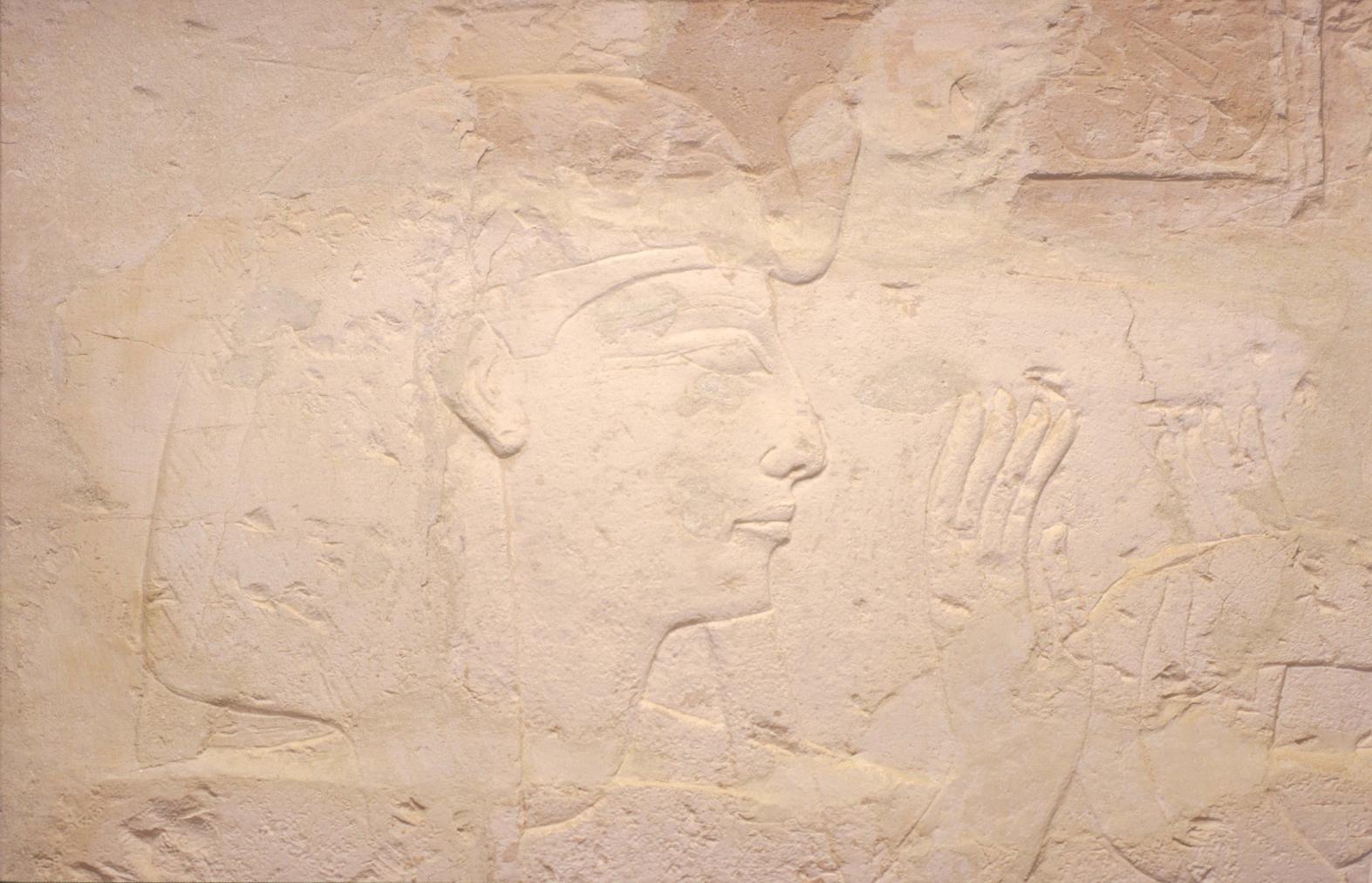

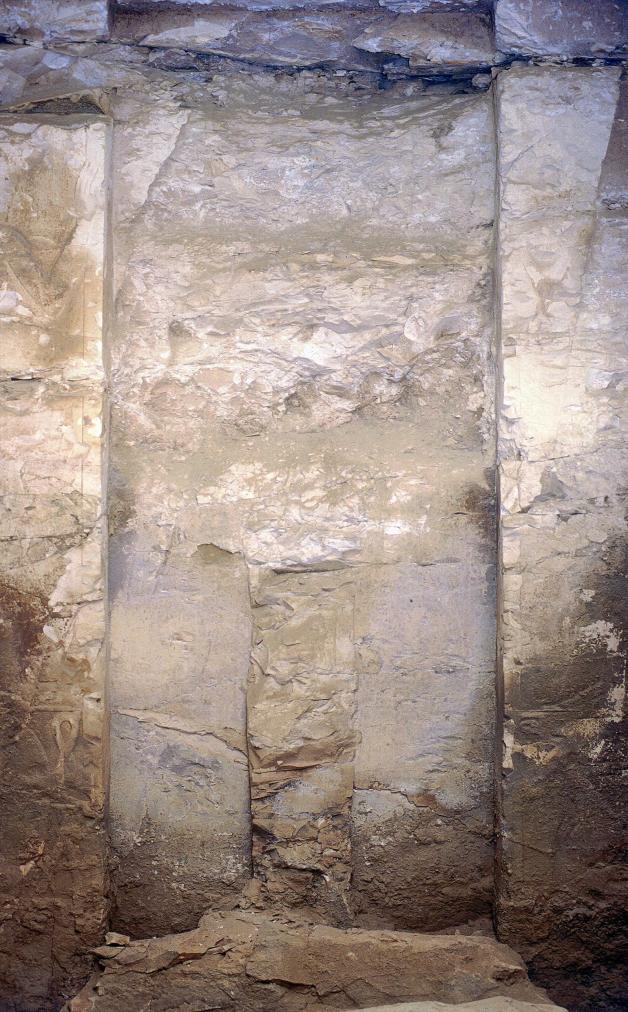

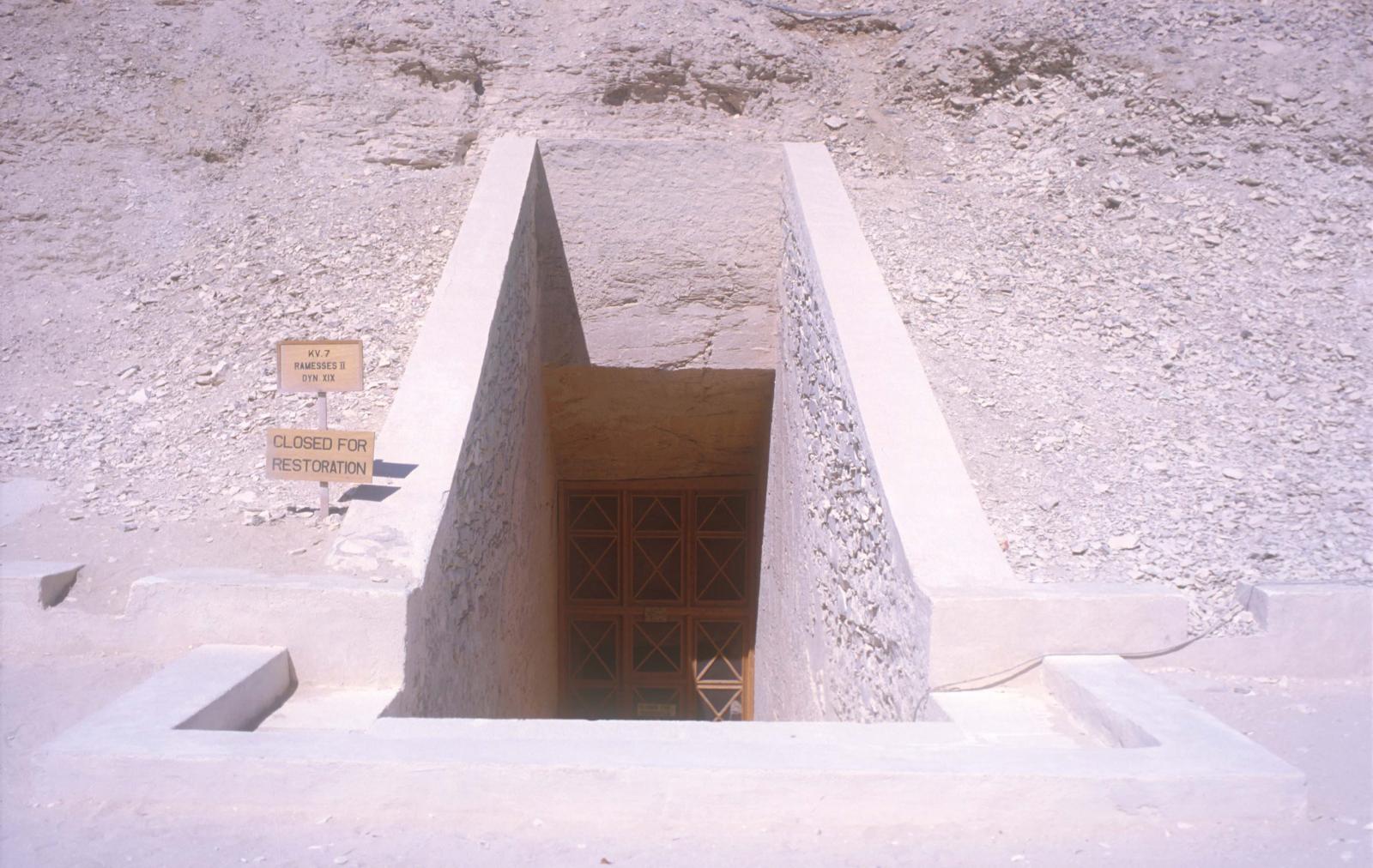
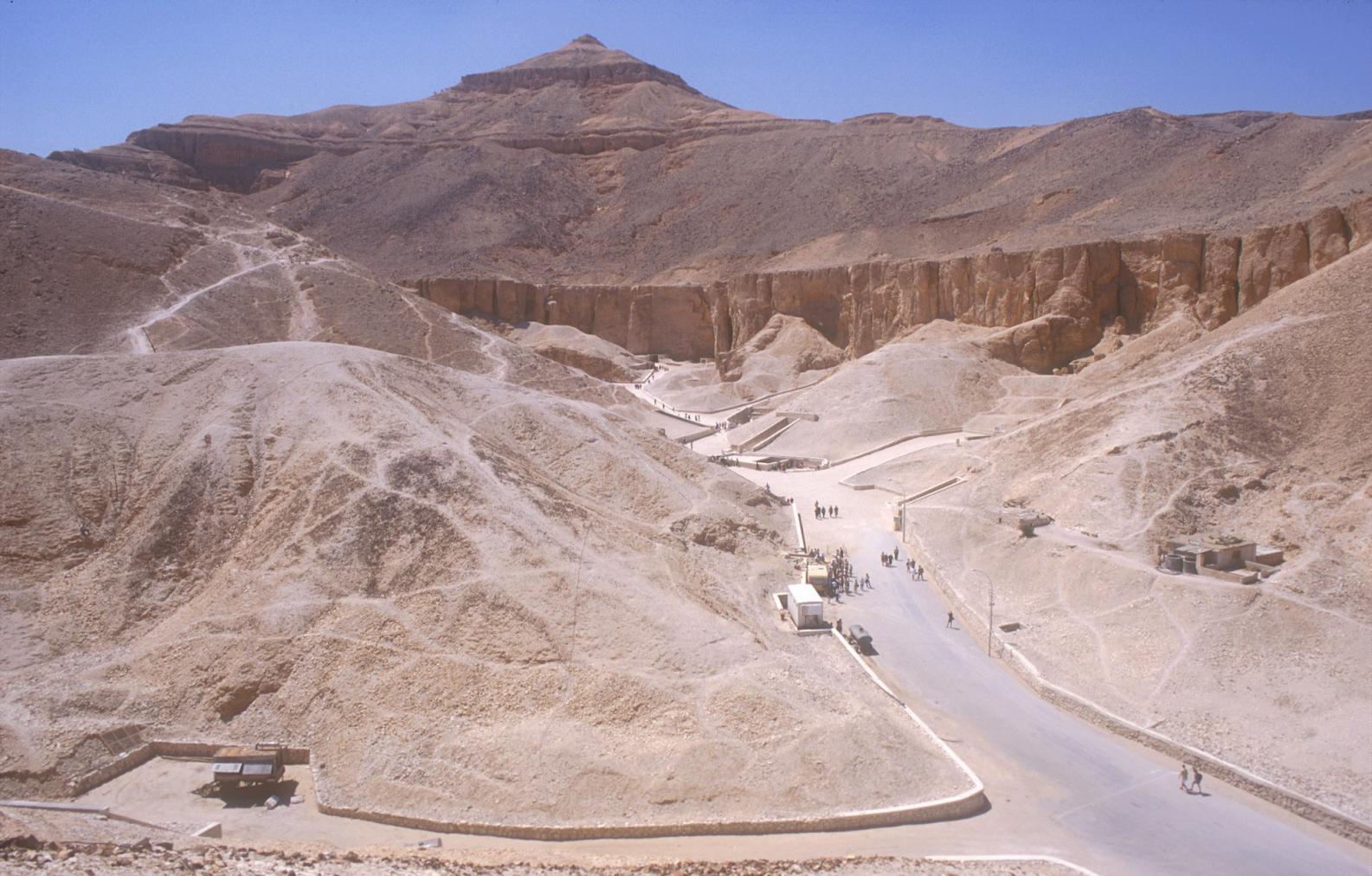
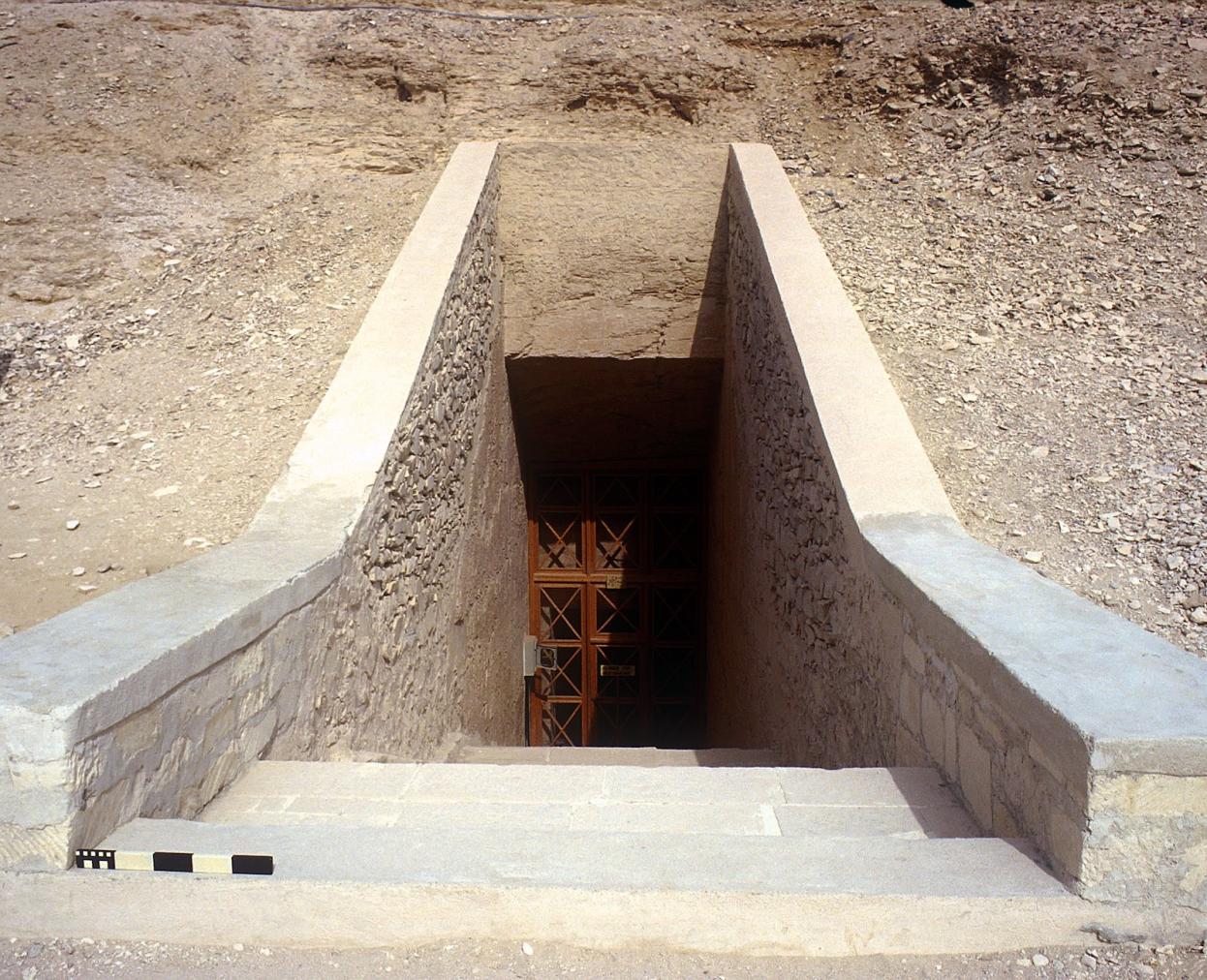
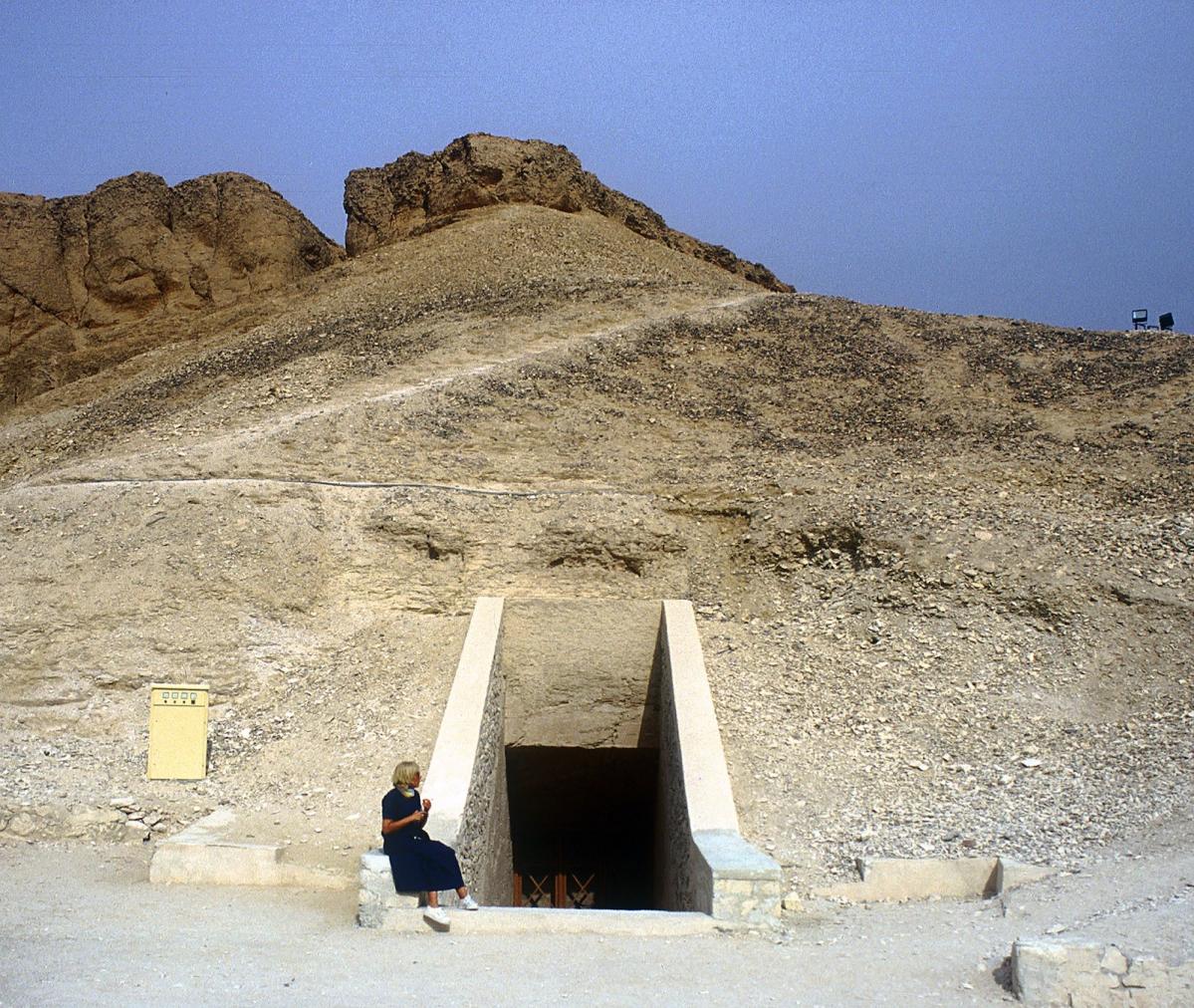
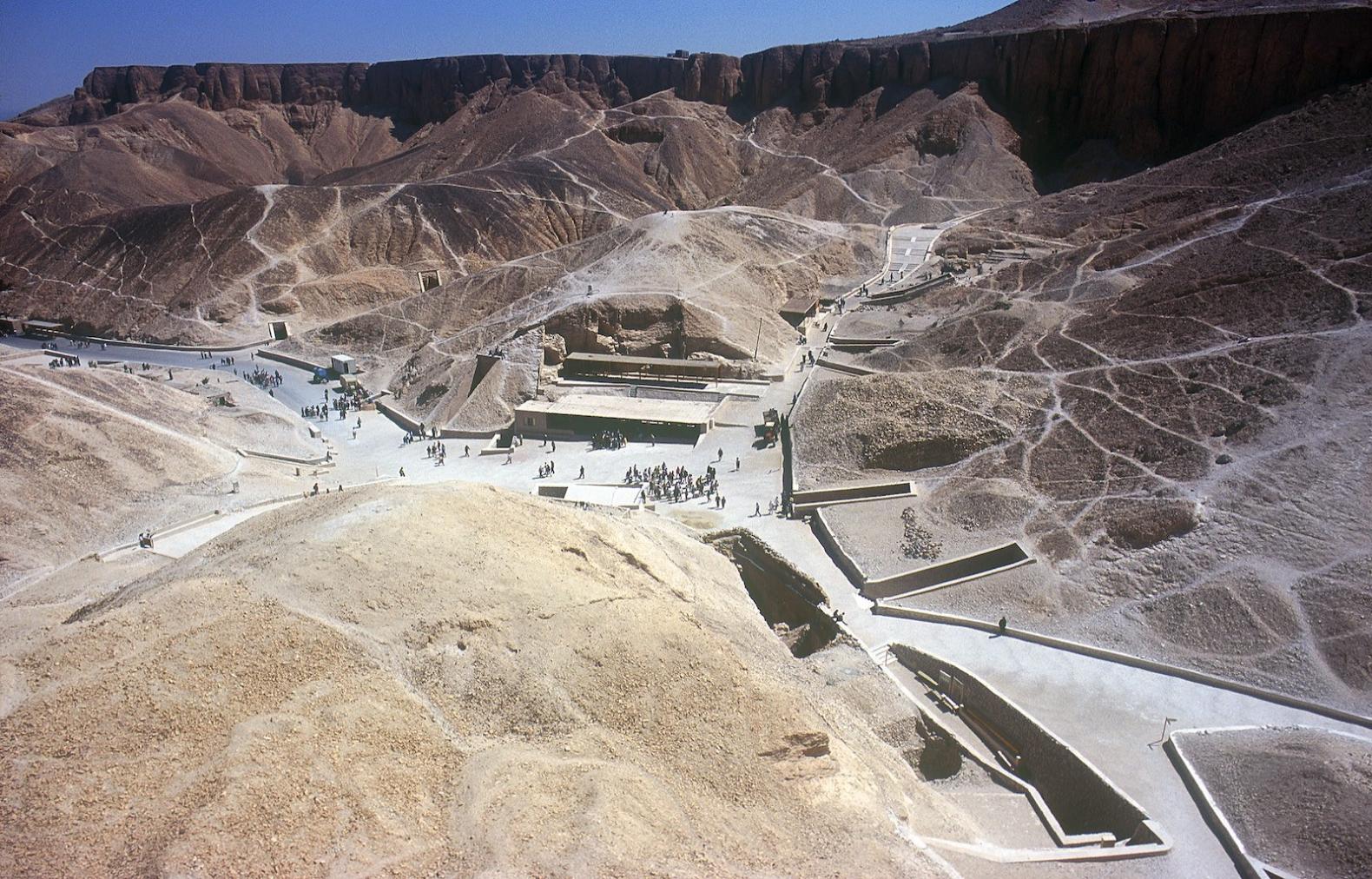
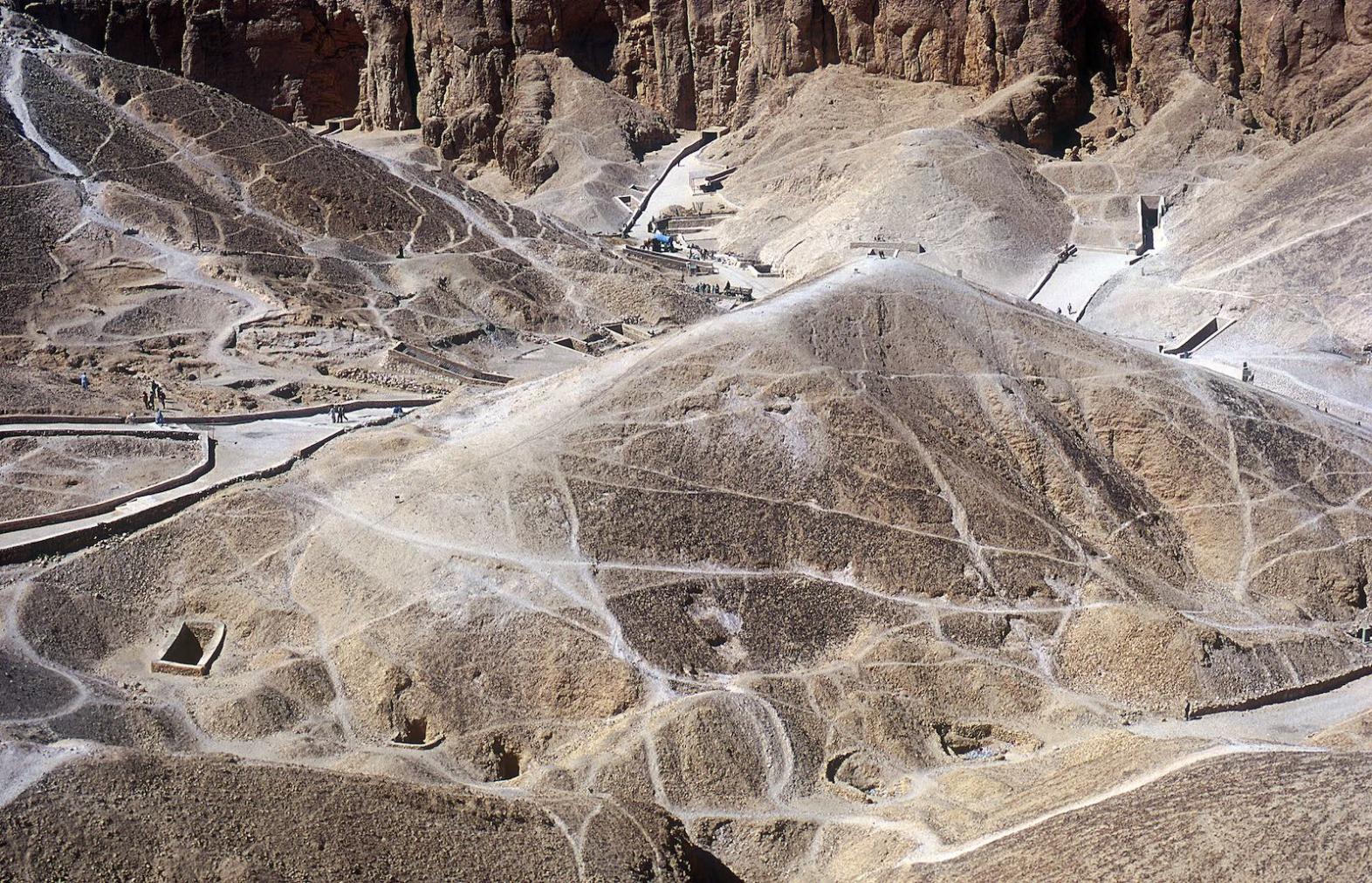
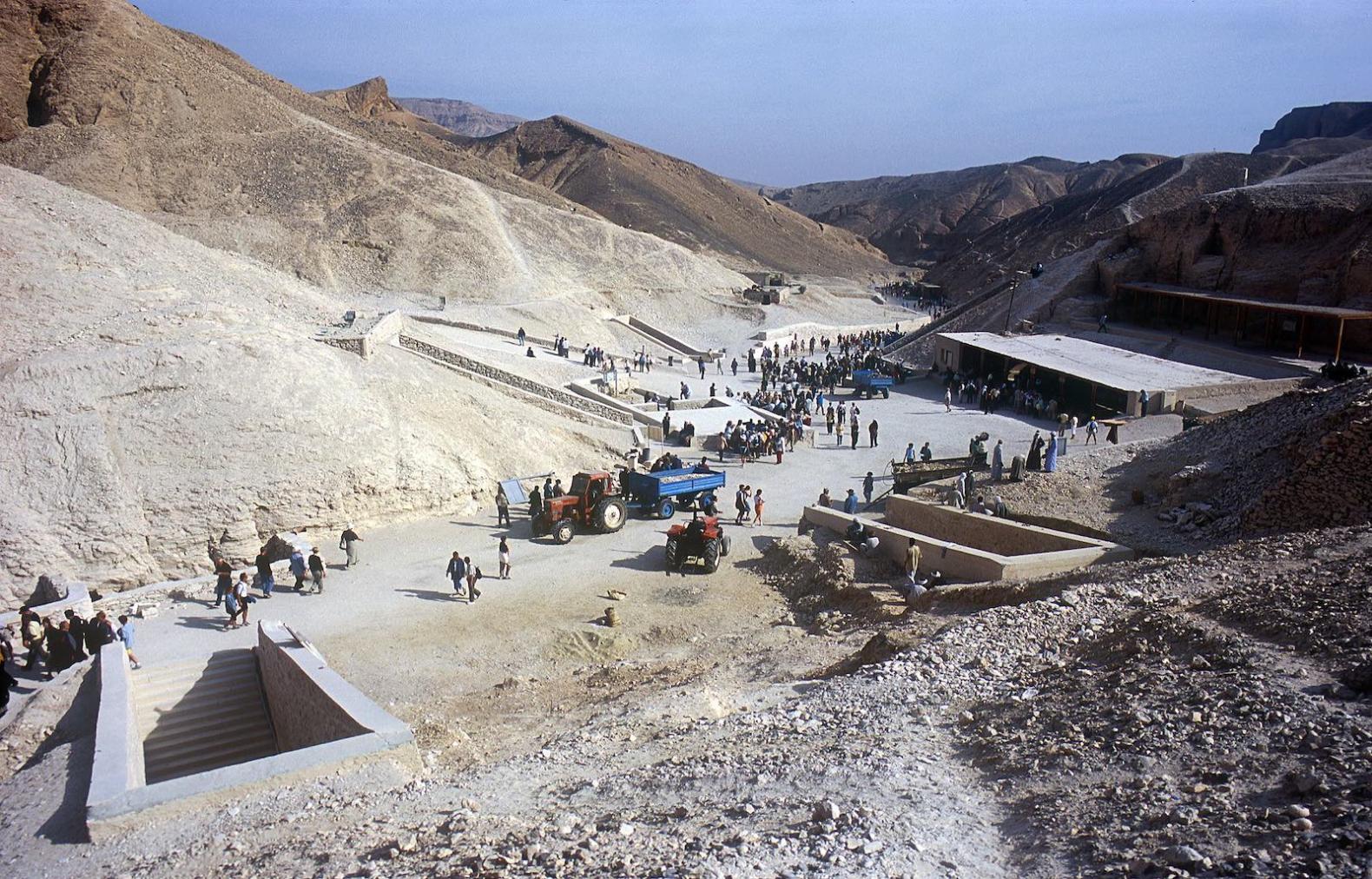
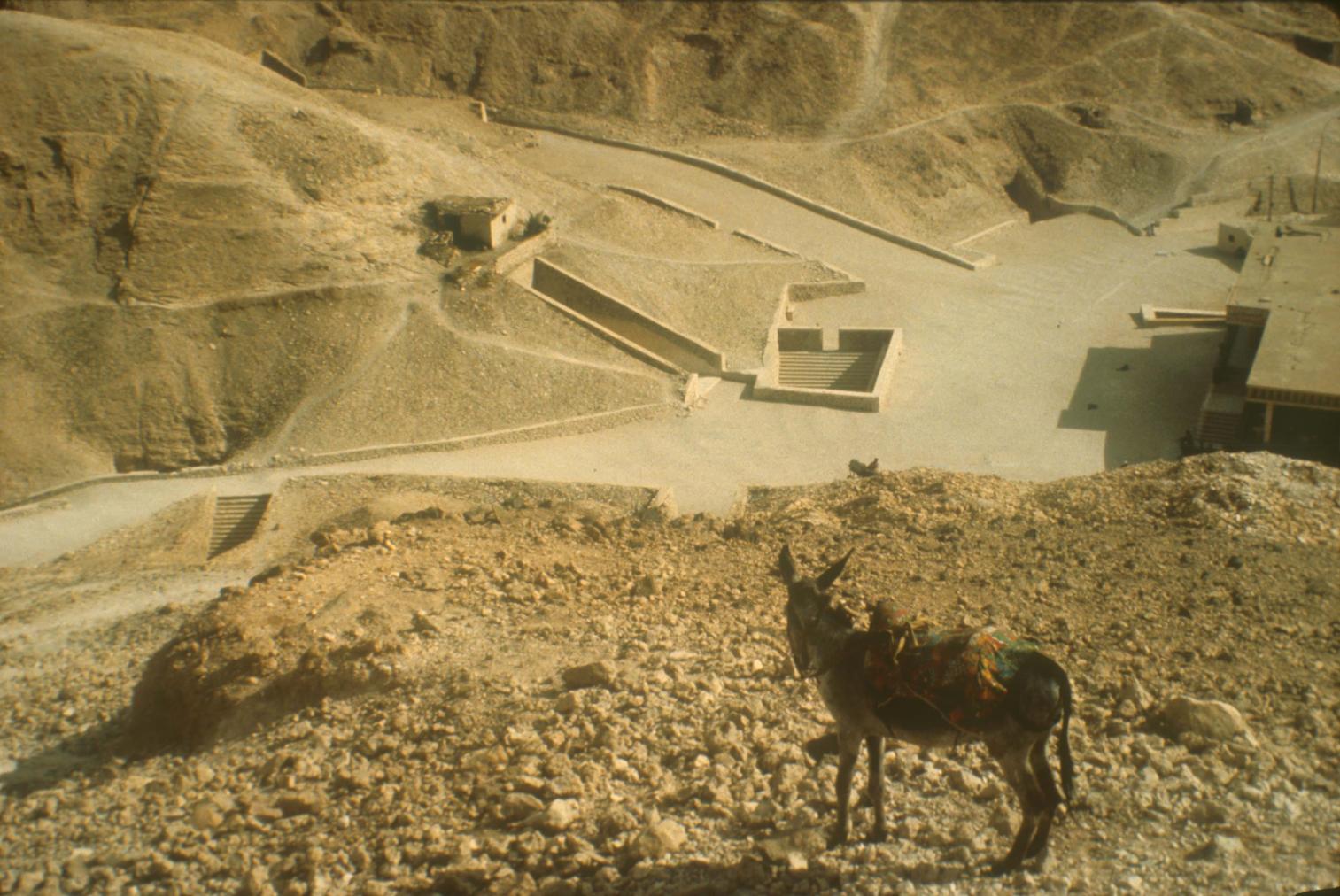
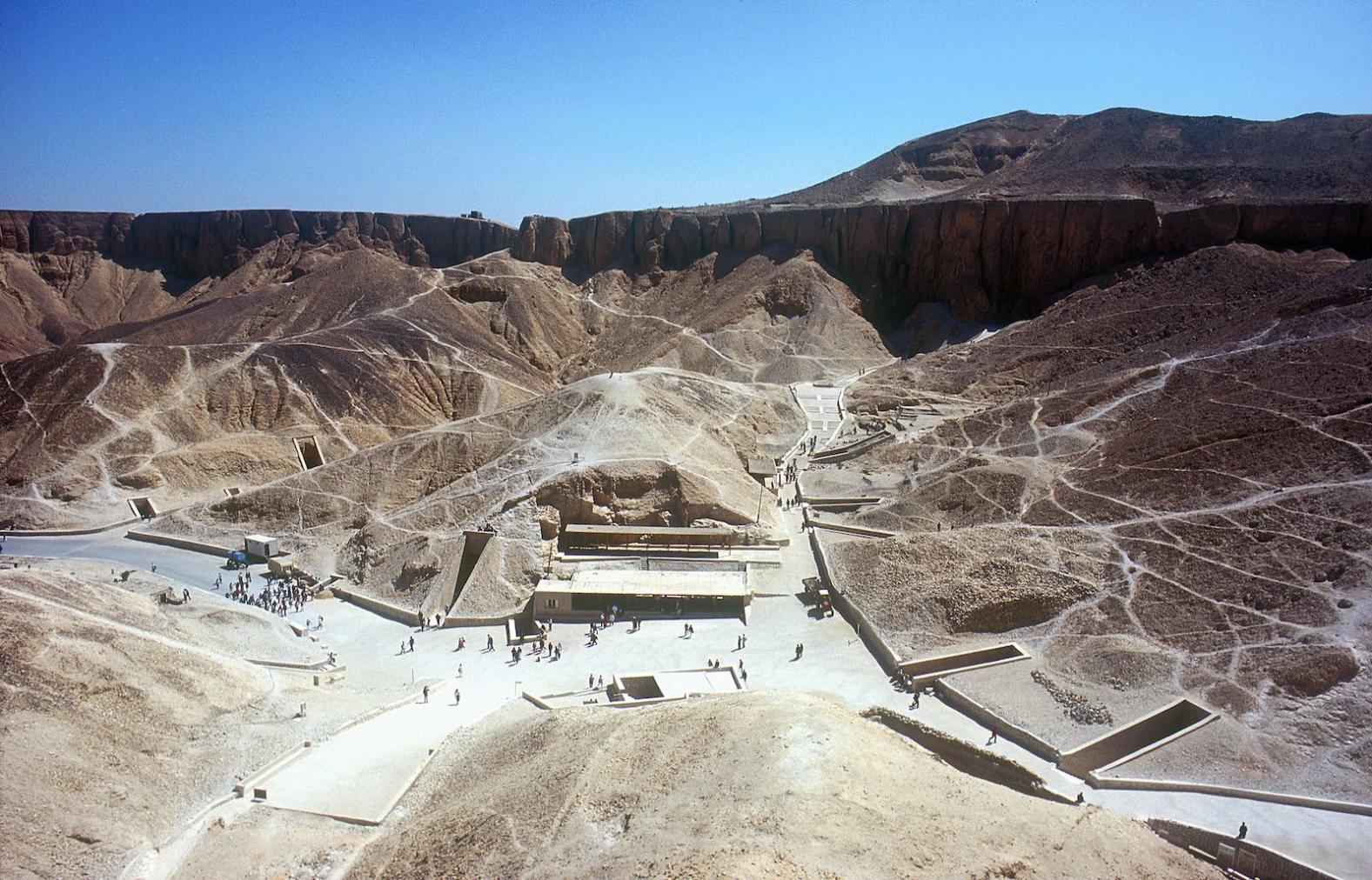
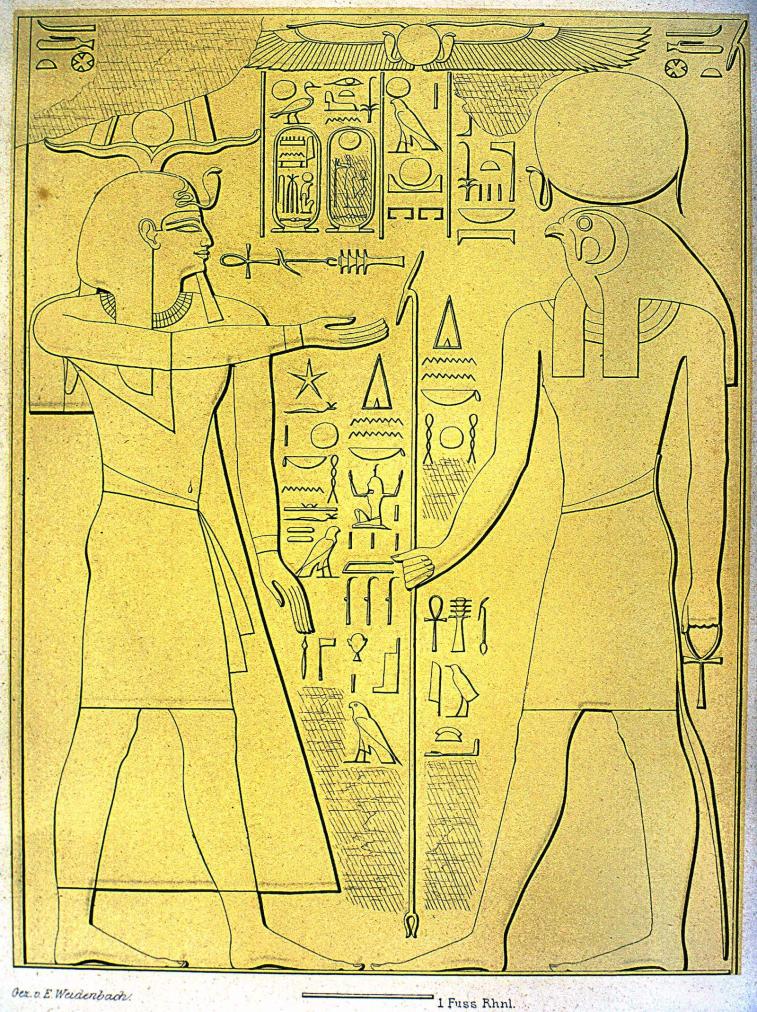
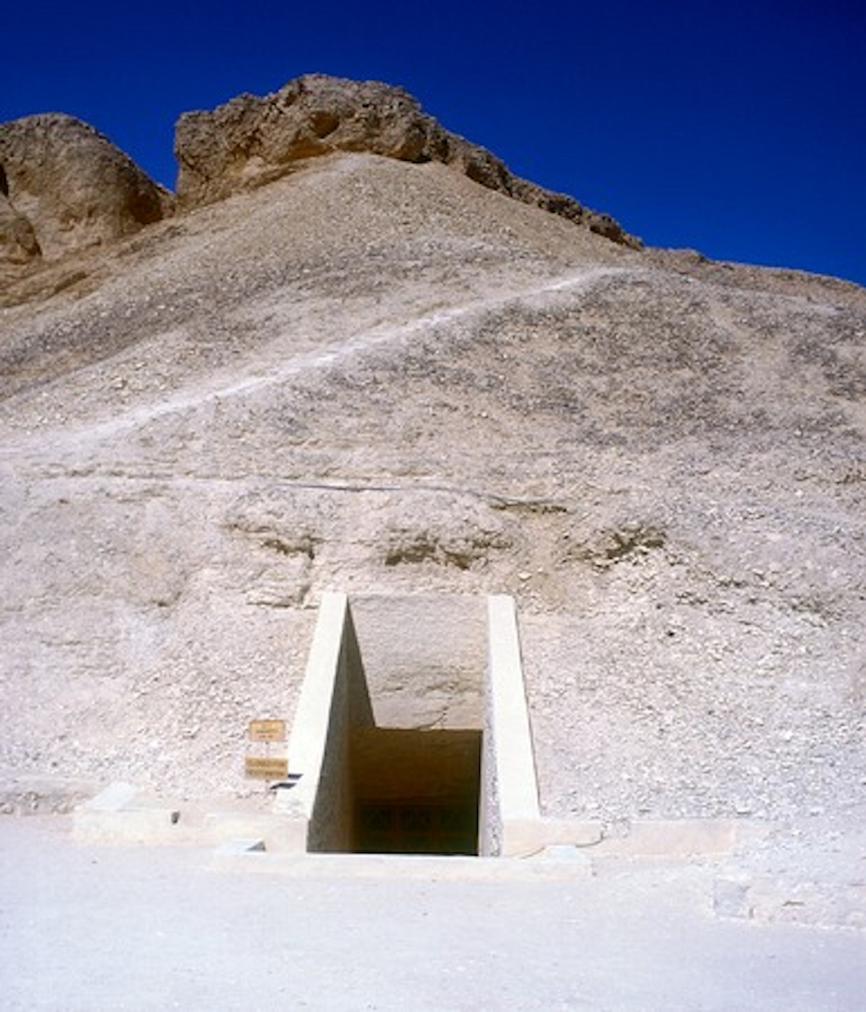
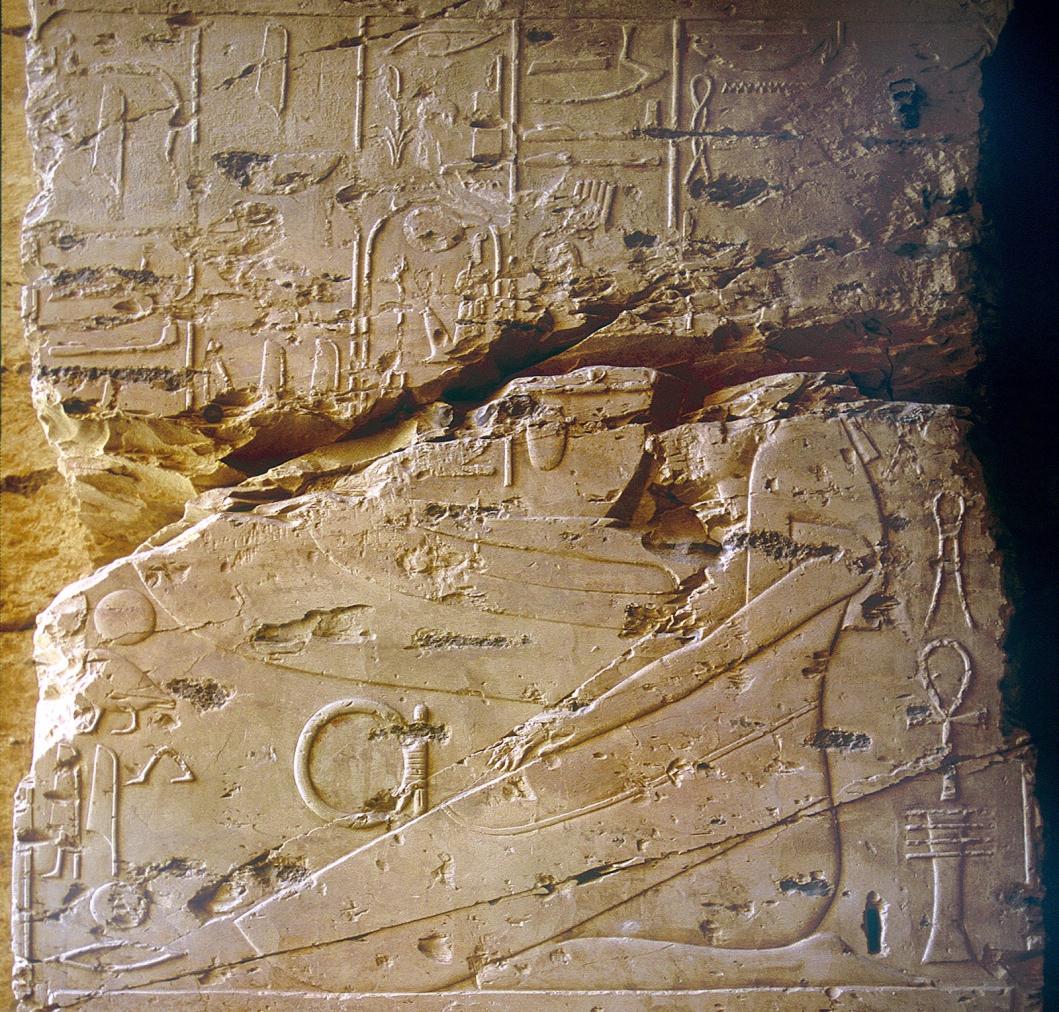
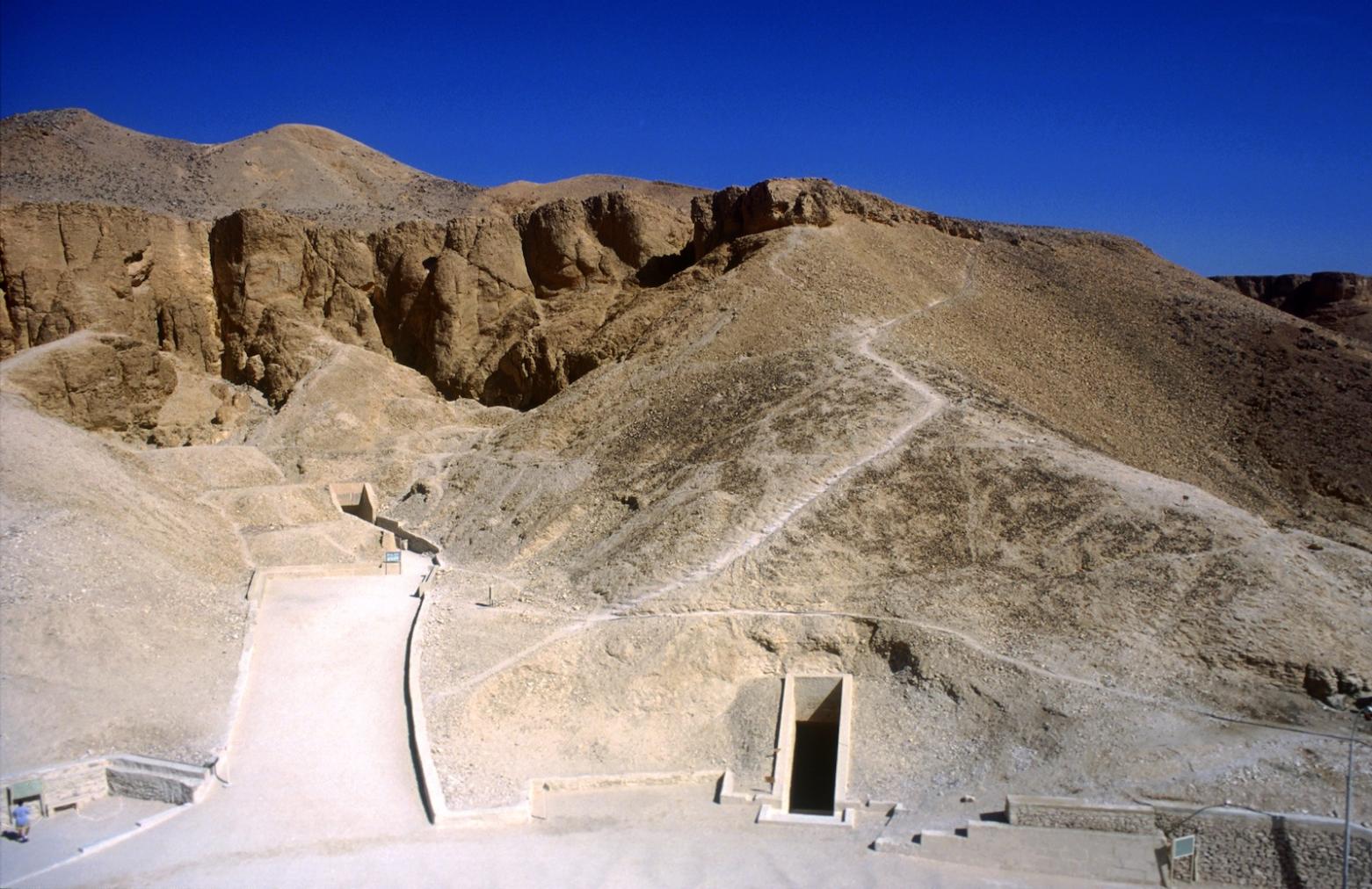
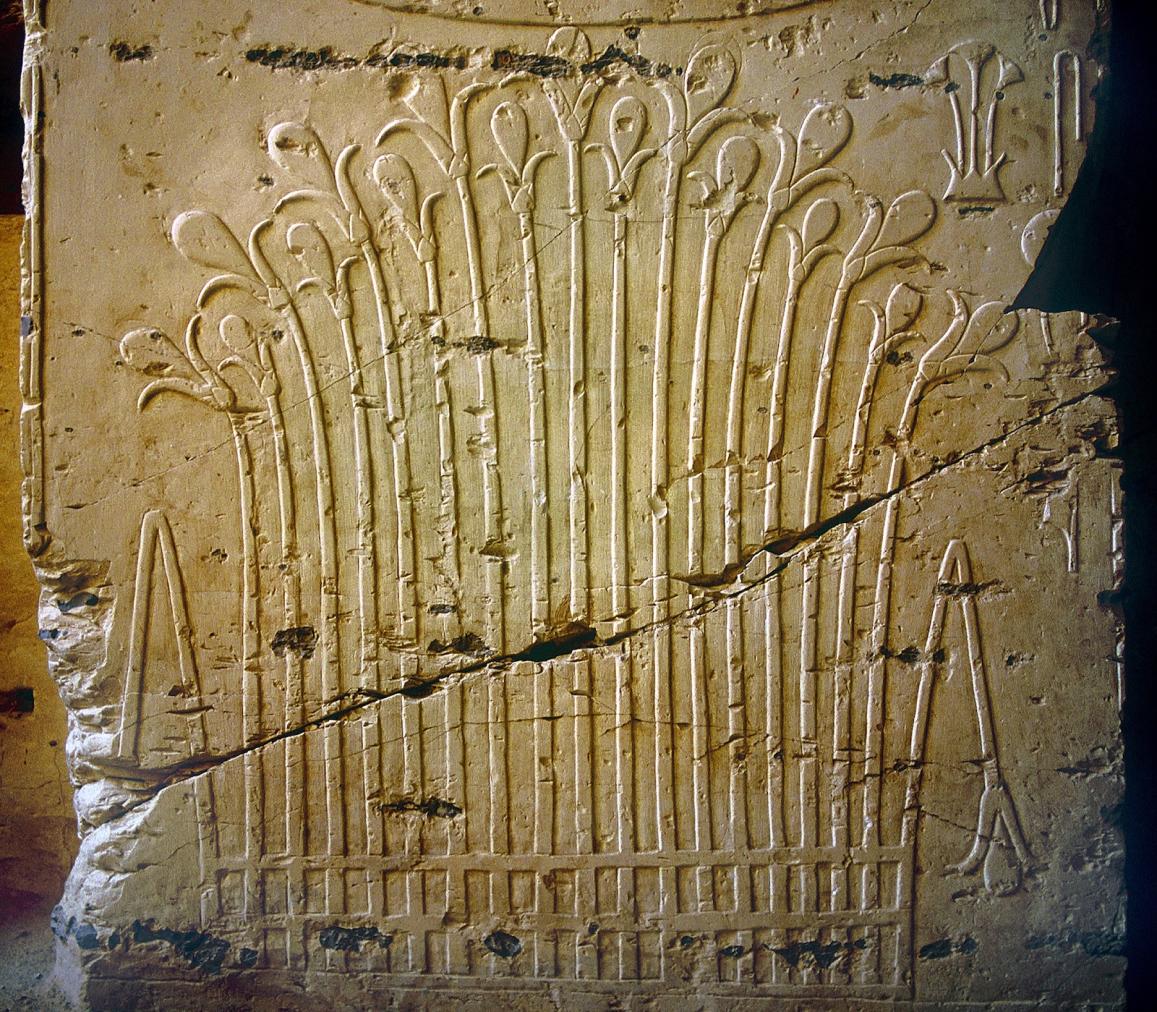
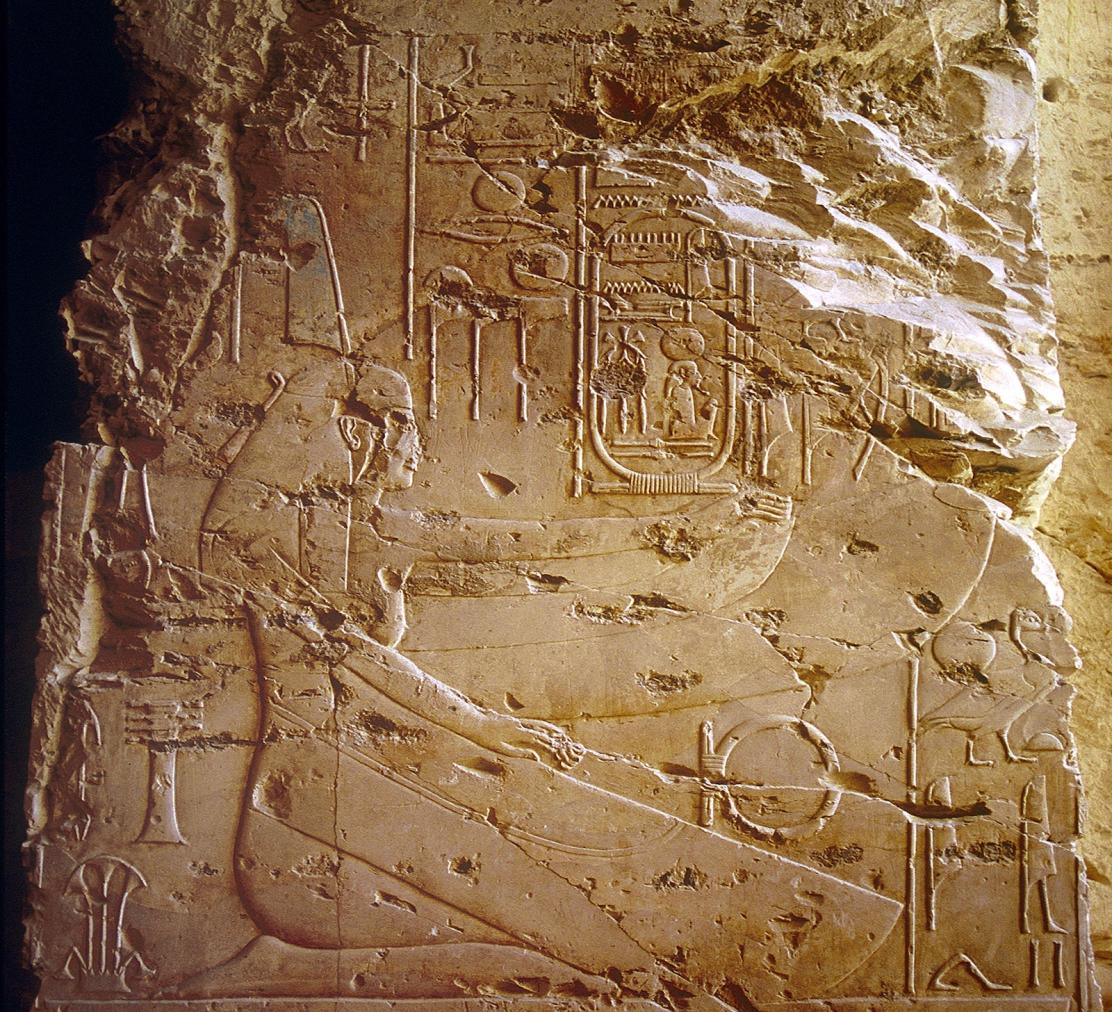
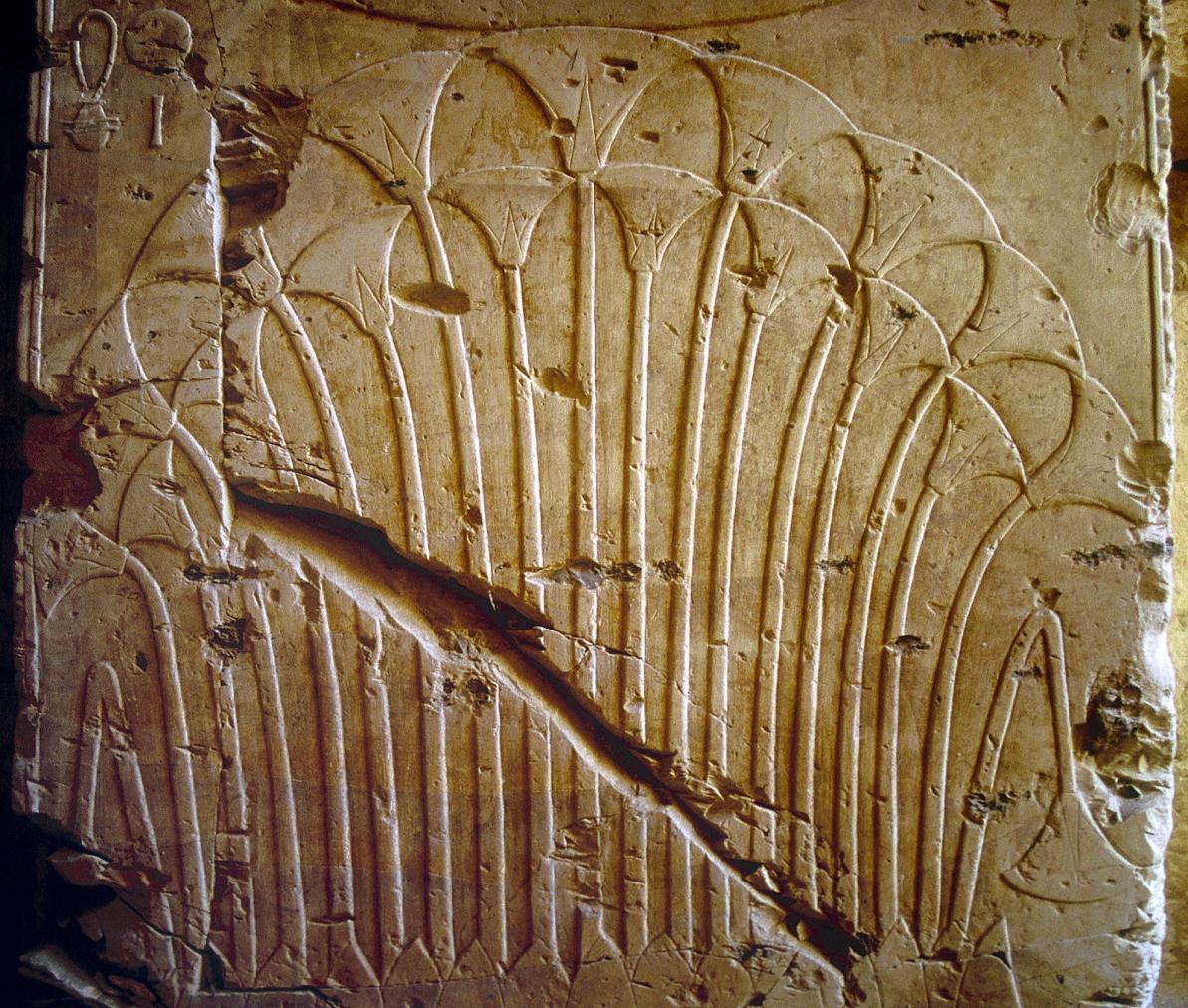

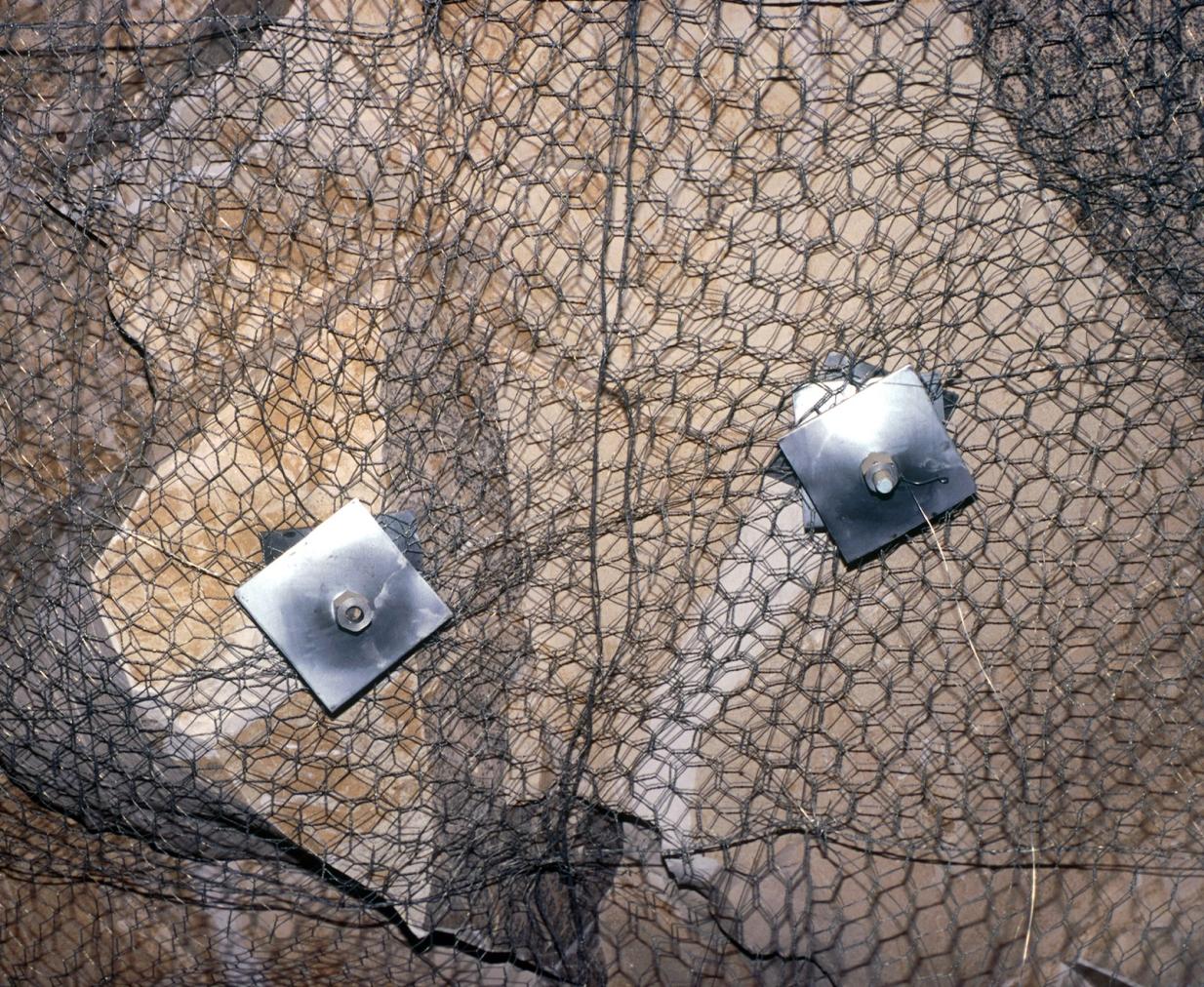
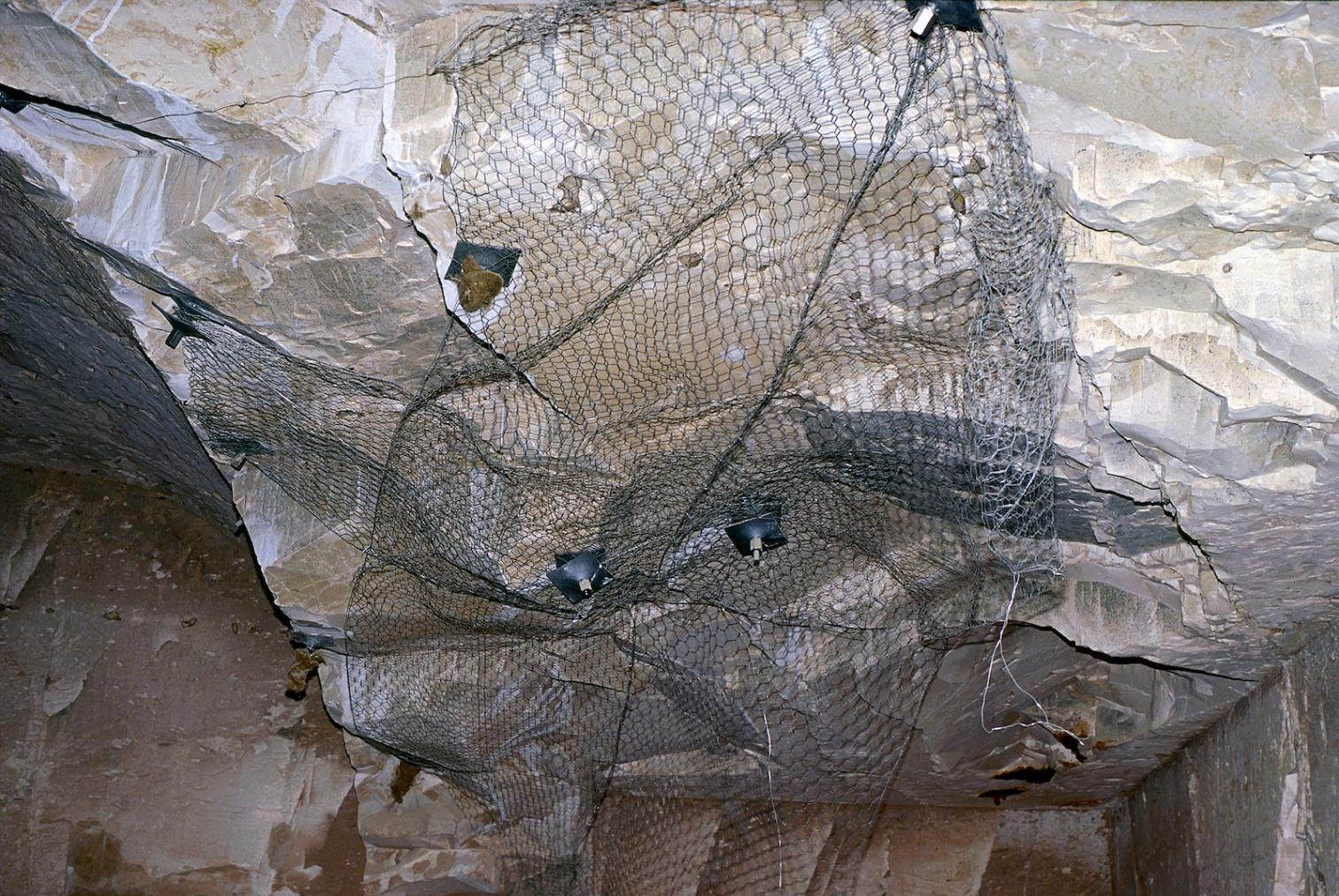


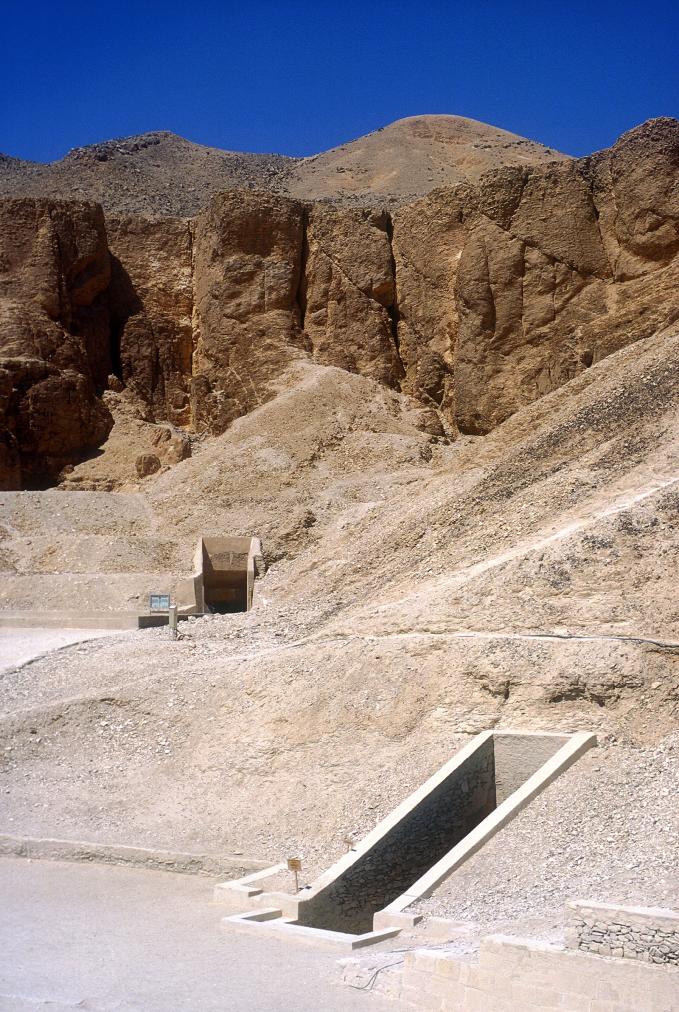
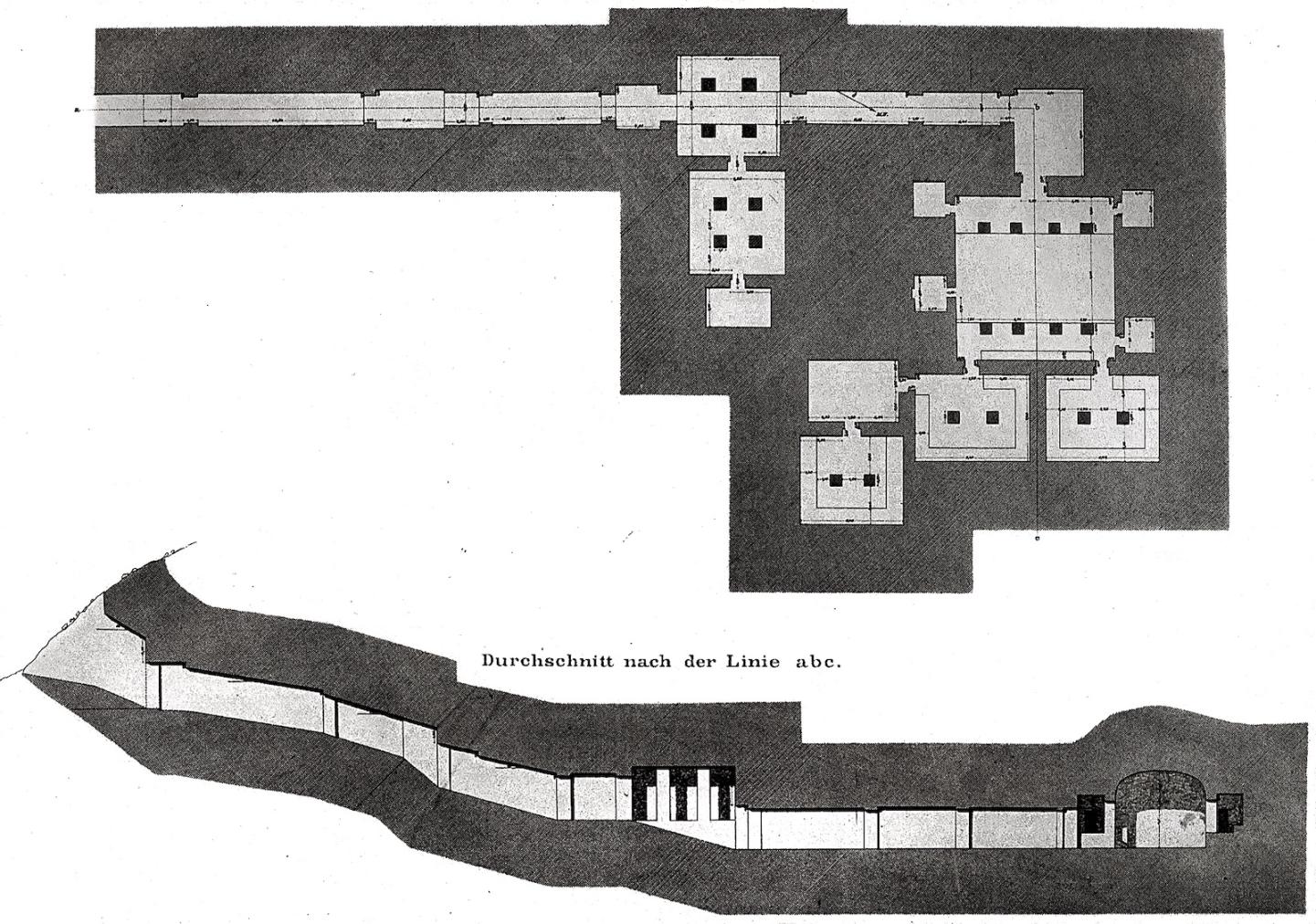
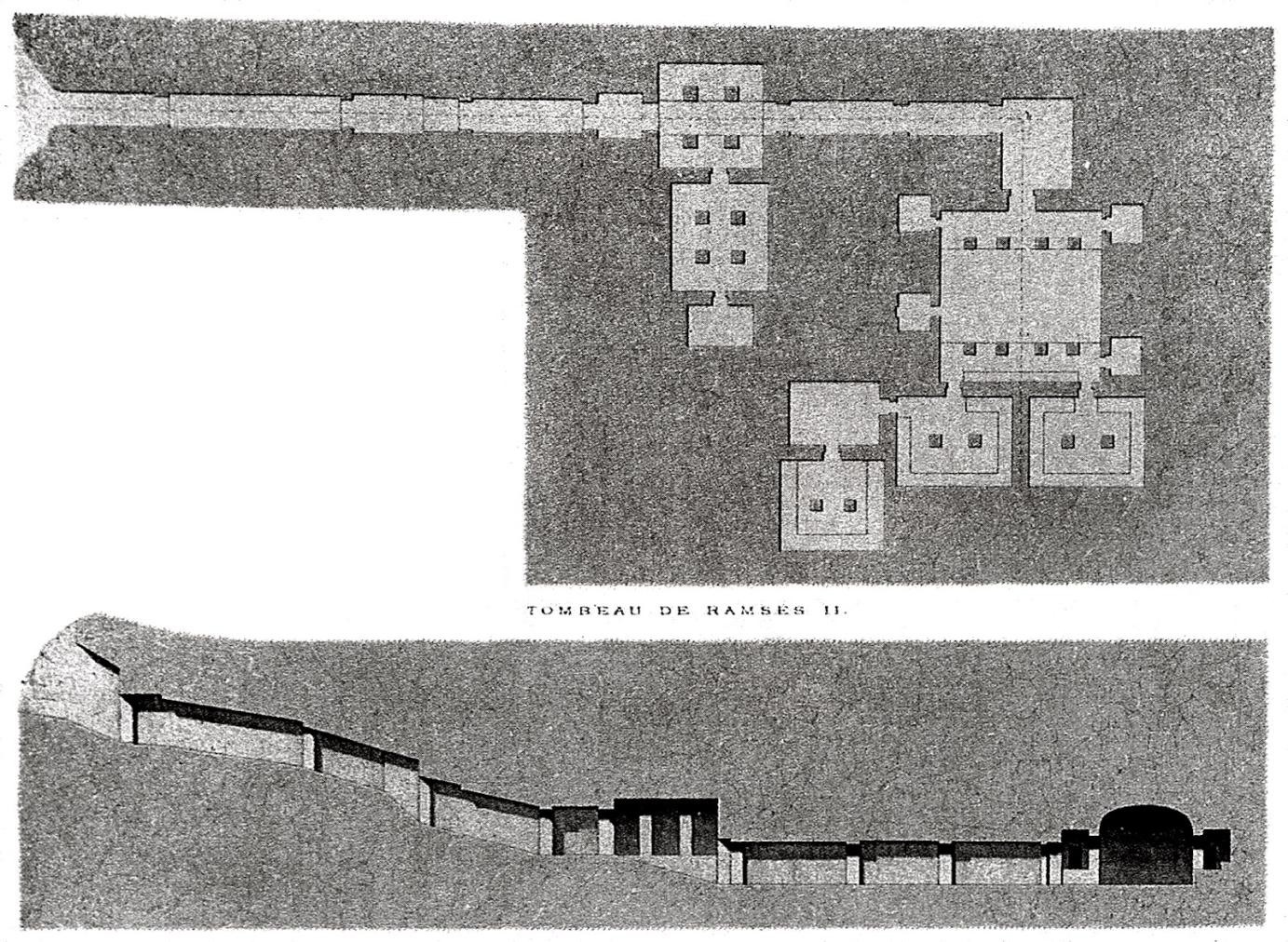
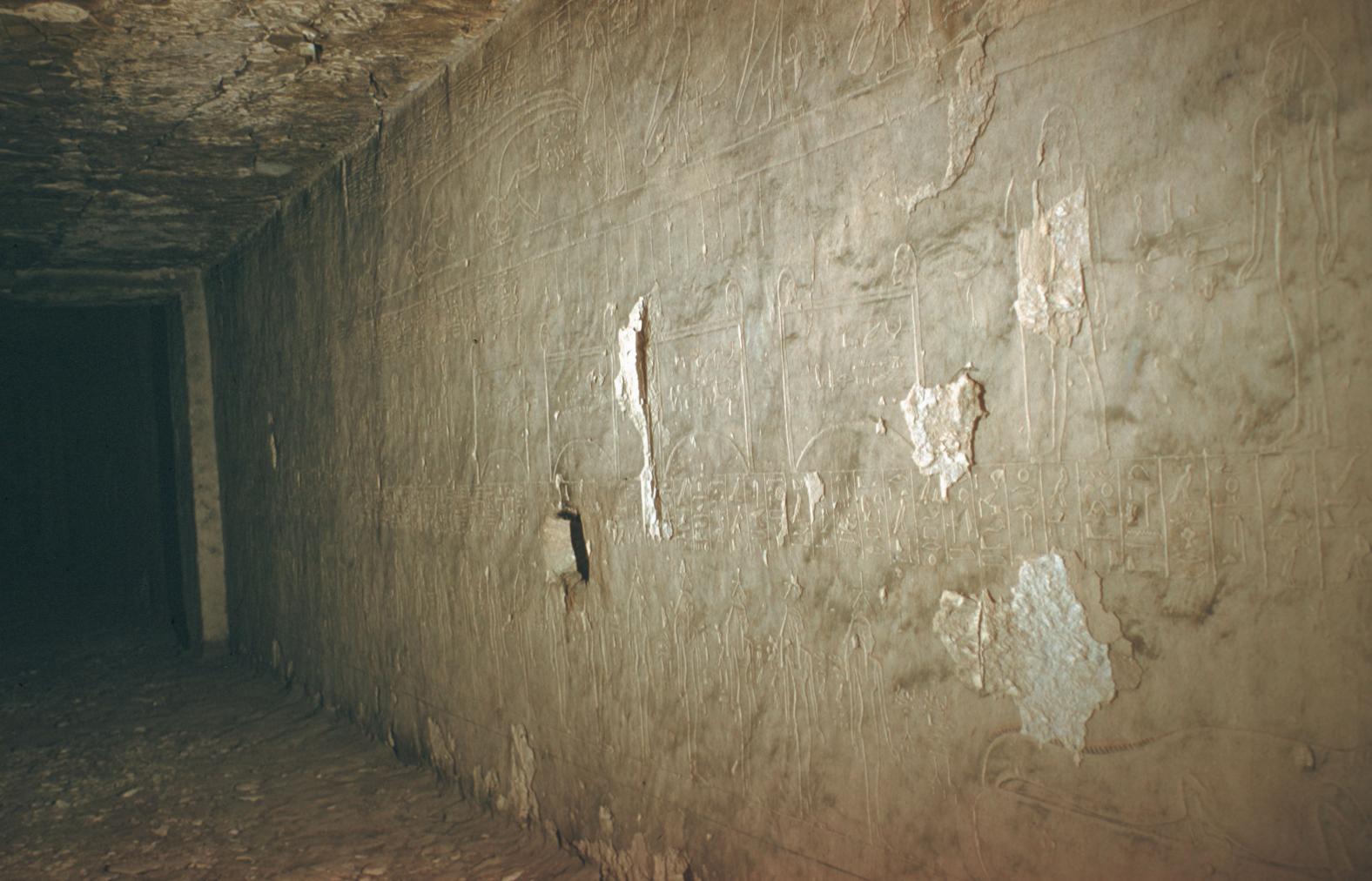
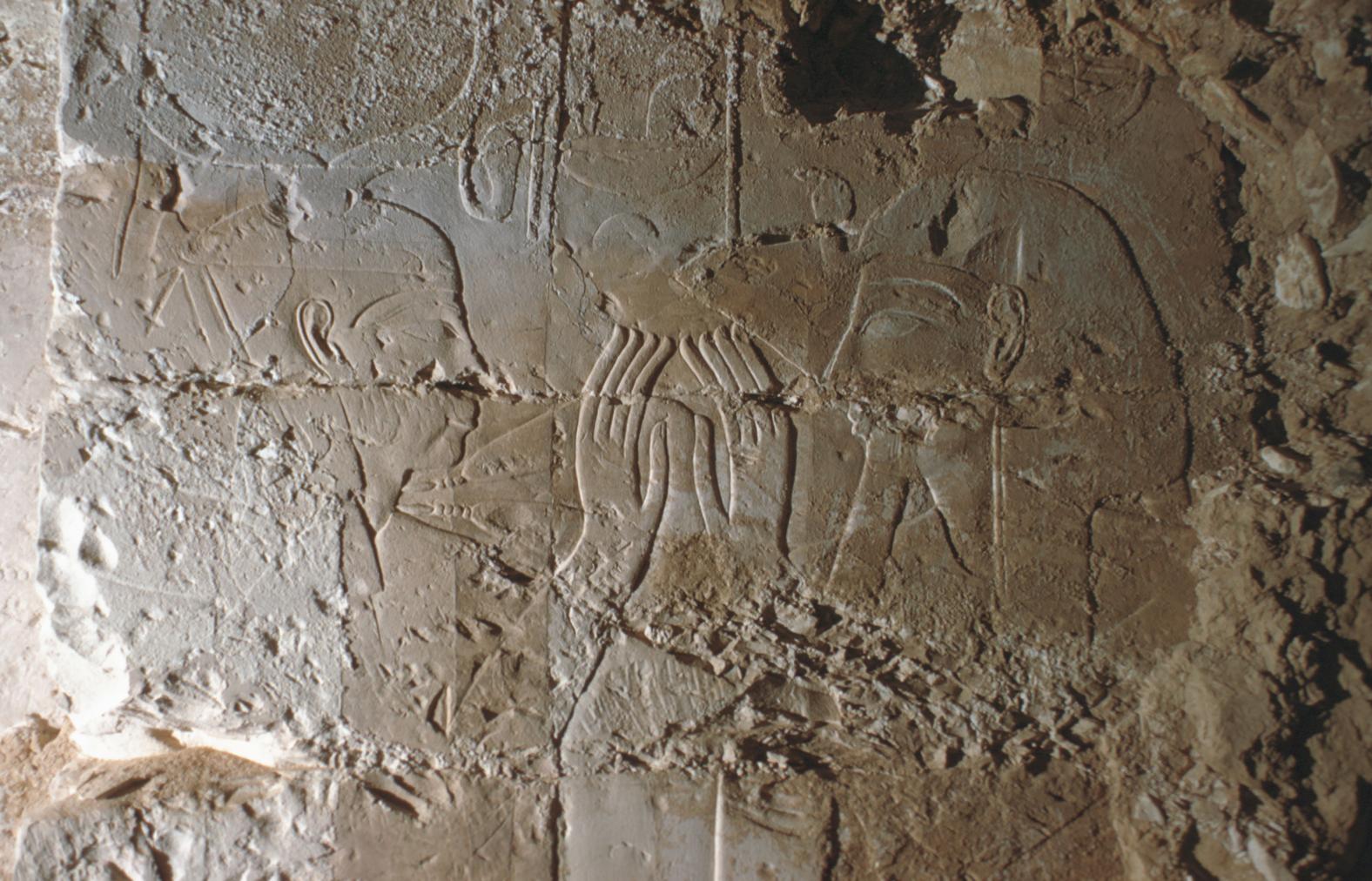
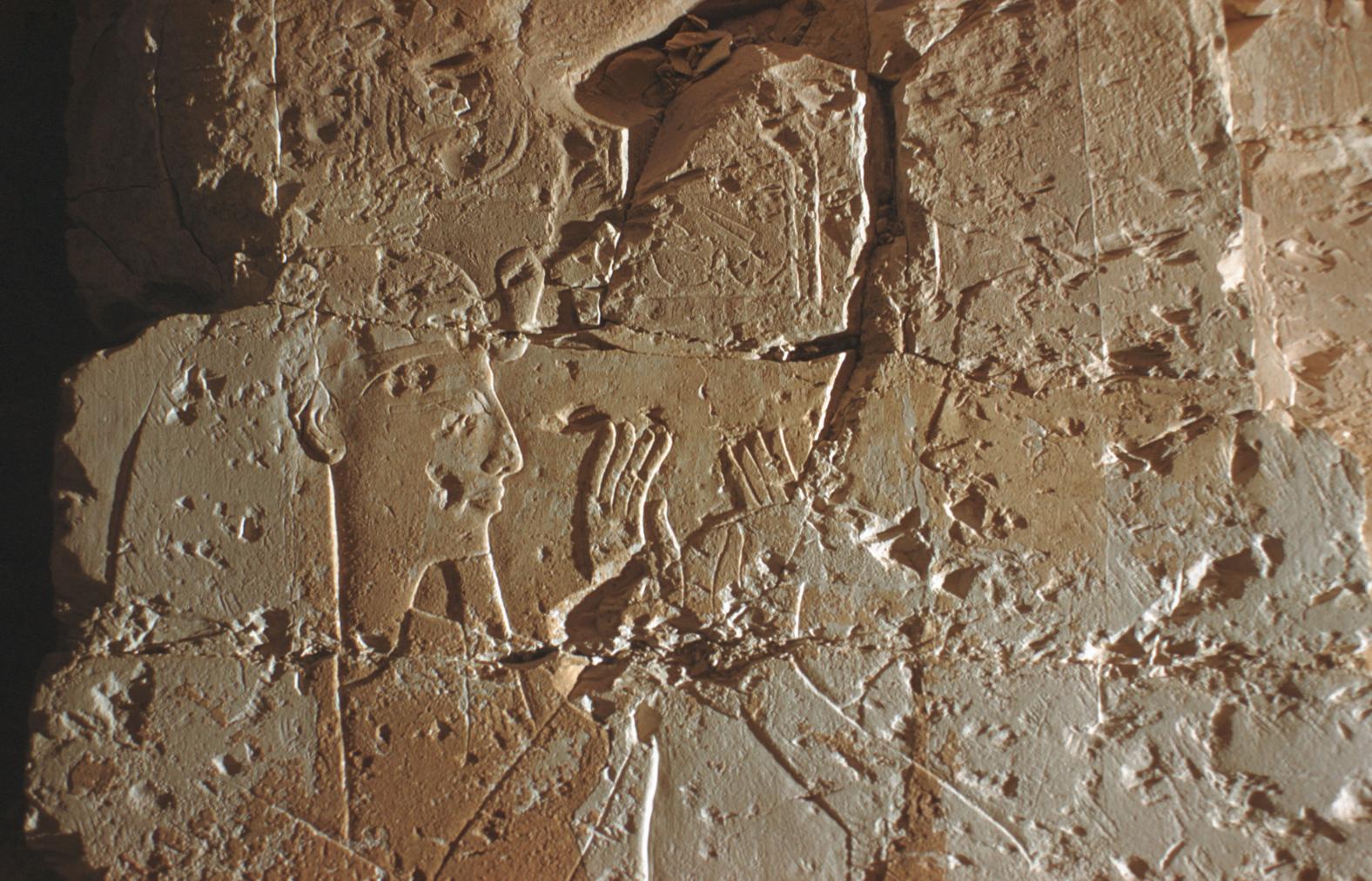
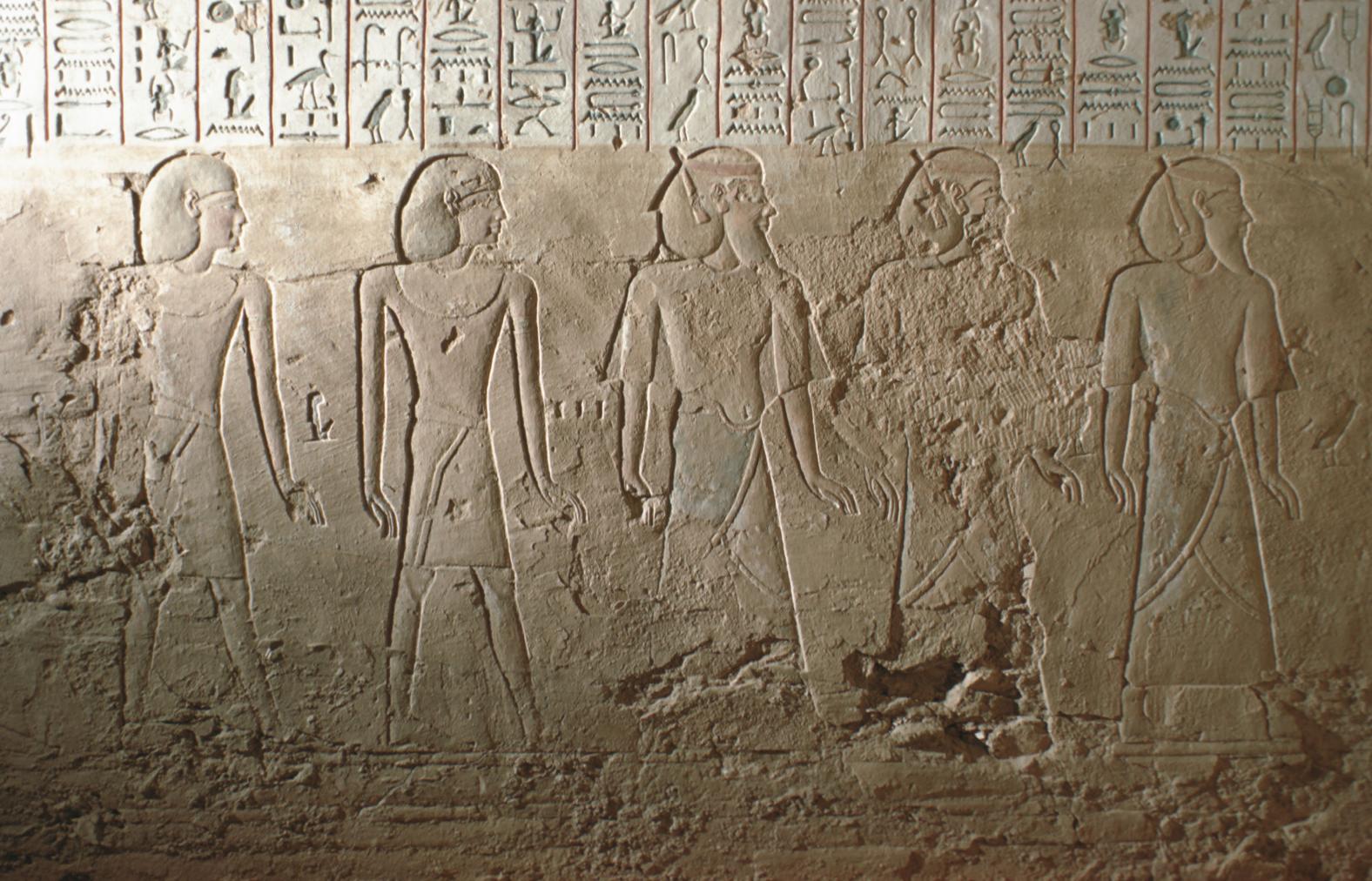
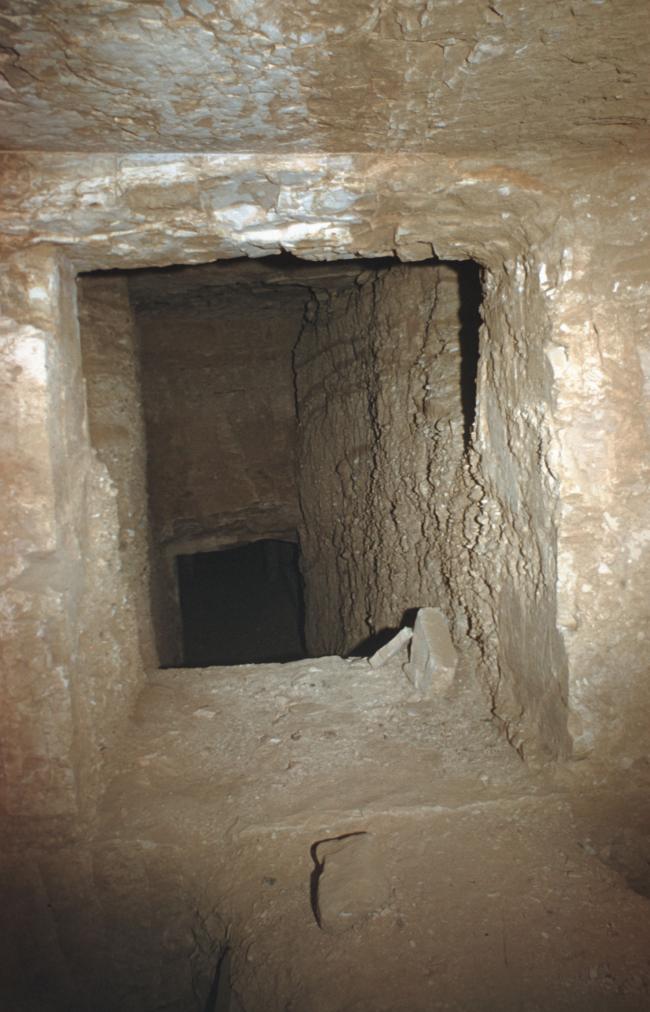
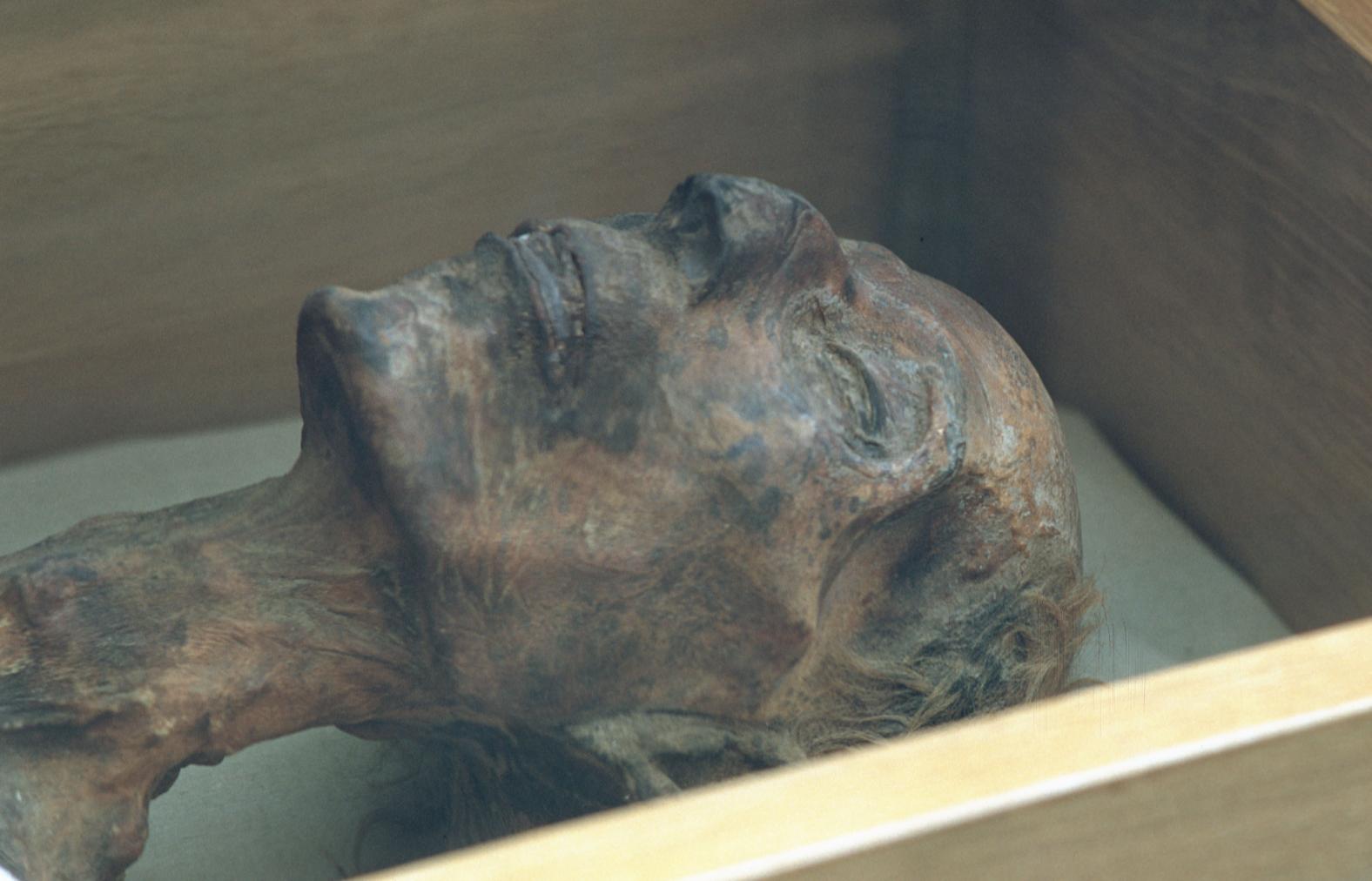
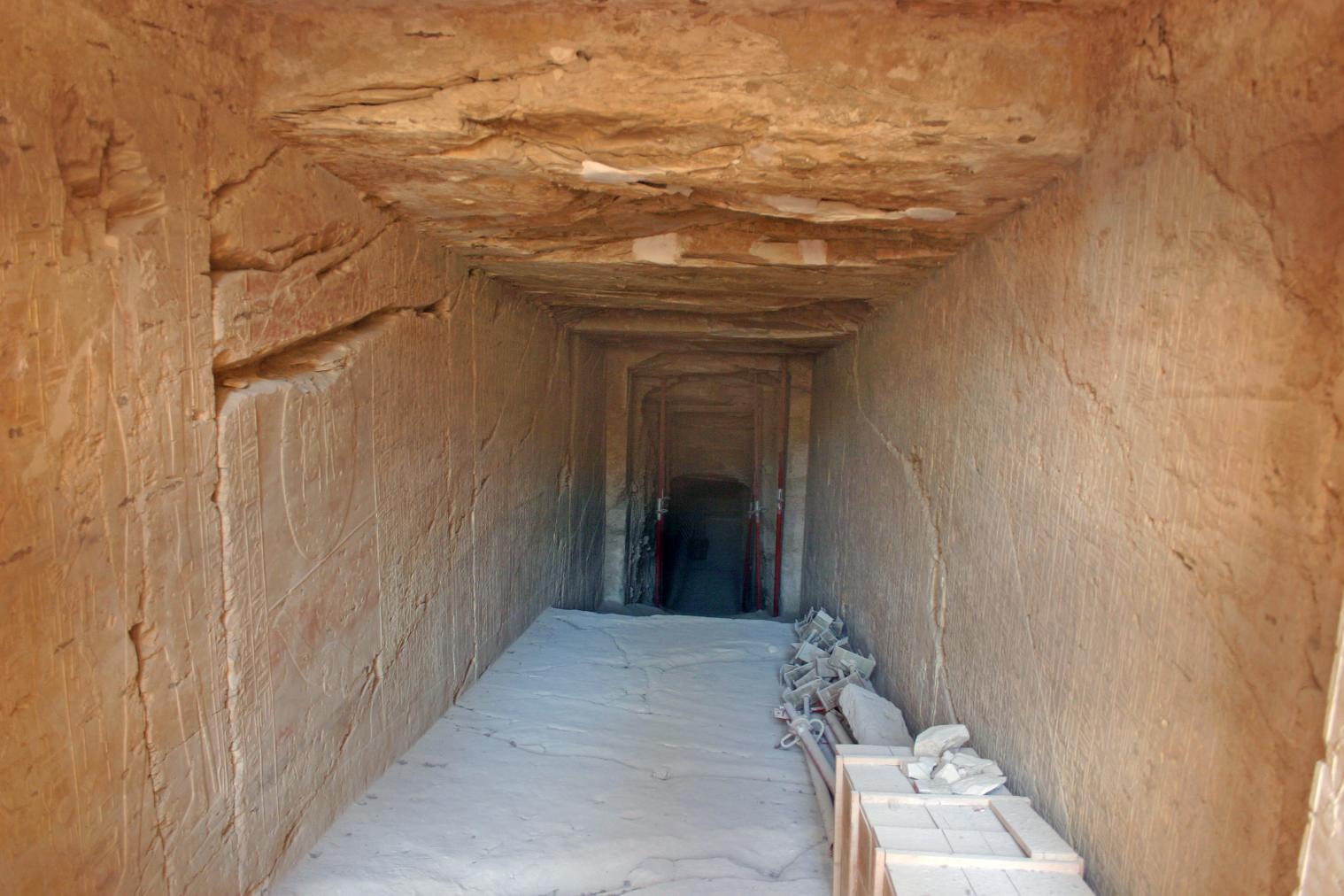
Articles
Geography and Geology of the Valley of the Kings
Historical Development of the Valley of the Kings
History of the Valley of the Kings: Third Intermediate Period to the Byzantine Period
Bibliography
Abitz, Friedrich. König und Gott: Die Götterszenen in den ägyptischen Königsgräbern von Thutmosis IV bis Ramses III (= Ägyptologische Abhandlungen, 40). Wiesbaden, 1984.
Amoros, Victoria Asensi. Identification xylogique d’un échantillon de bois découverte dans la tombe de Ramsès II. Memnonia 8 (1997): 173-176.
Côte, Philippe, Xavier Derobert and André Guillaume. Auscultations radar dans la tombe de Ramsès II. Memnonia 7 (1996): 157-162.
Evrard, H. and A. Guillaume. Analyse structurale et géotechnique de la tombe de Ramsès II, Vallée des Rois, Louqsor, Egypte. Memnonia VIII (1997): 129-149.
Guillaume, André, Daniel Jeannette, Hélène Paquet, and Jean-François Serratrice. Géotechnique de la Formation d'Esna et Conservation de la Tombe de Ramsès II (Vallée des Rois, Louqsor, Égypte). Revue d'archéométrie 25 (2001): 113-123.
Guillaume, André. Sondages électromagnétiques dans la tombe de Ramsès II. Memnonia 9 (1998): 67-72.
Guillaume, André. Prospection micrigravimétriques dans la tombe de Ramsès II, KV 7, Vallée des Rois. Memnonia 11 (2000): 71-90.
Guillaume, André. Sur quelques images remarquables concernant l’hypogée de Ramsès II [KV.7] (Vallée des Rois, Louqsor, Egypte). Memnonia 15 (2004): 197-201.
Guillaume, André and Aline Emery-Barbier. La remplissage sédimentaire de la tombe de Ramsès II, Memnonia 6 (1995), 147-173.
